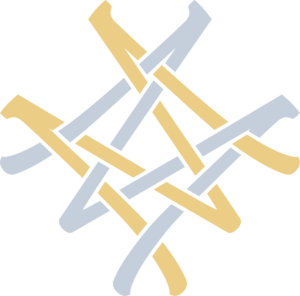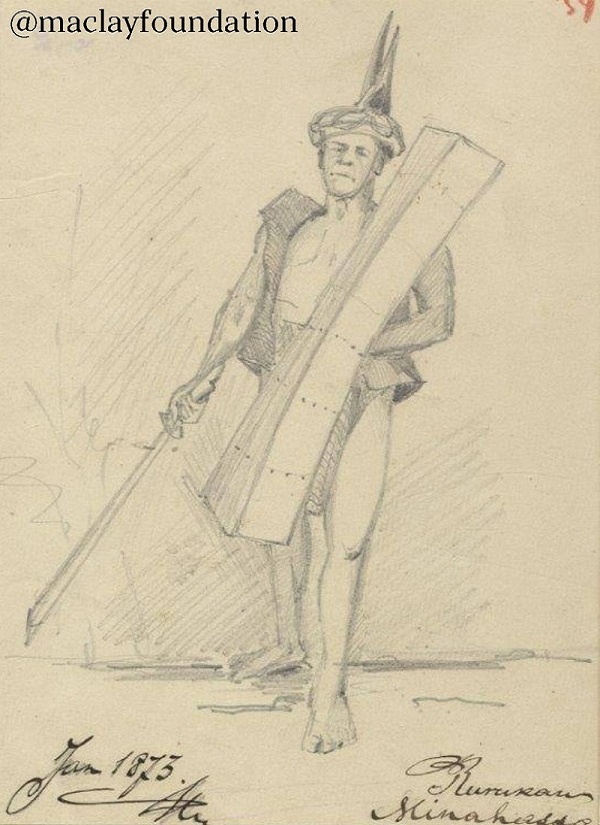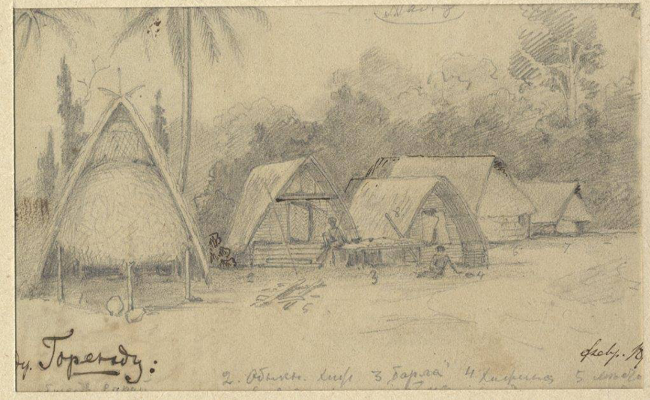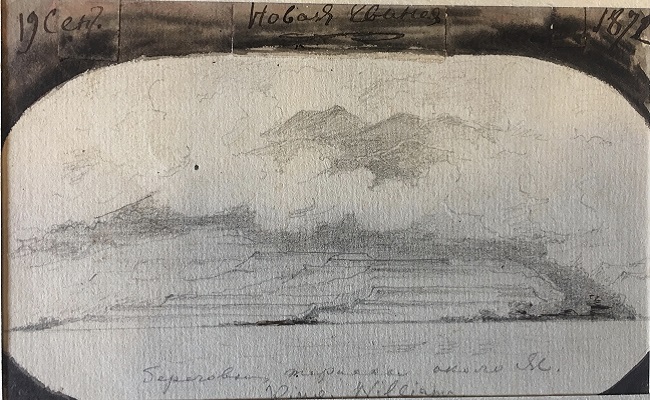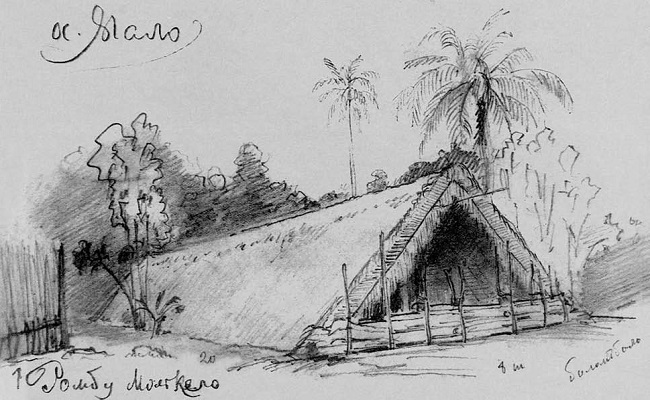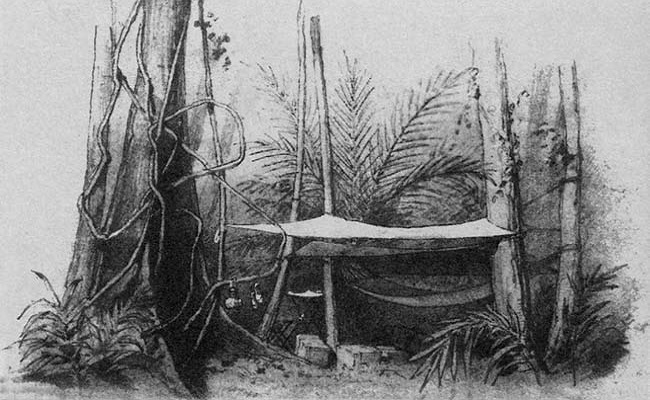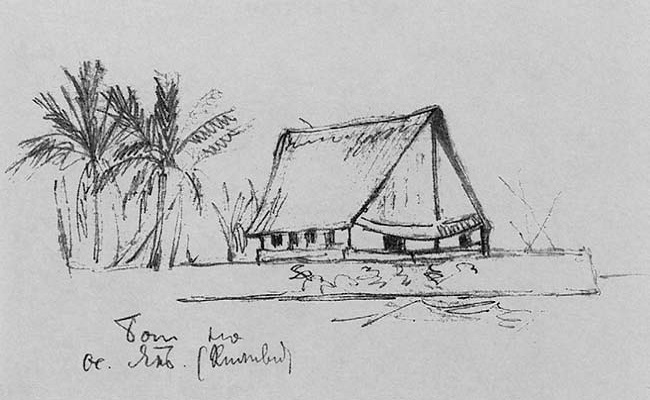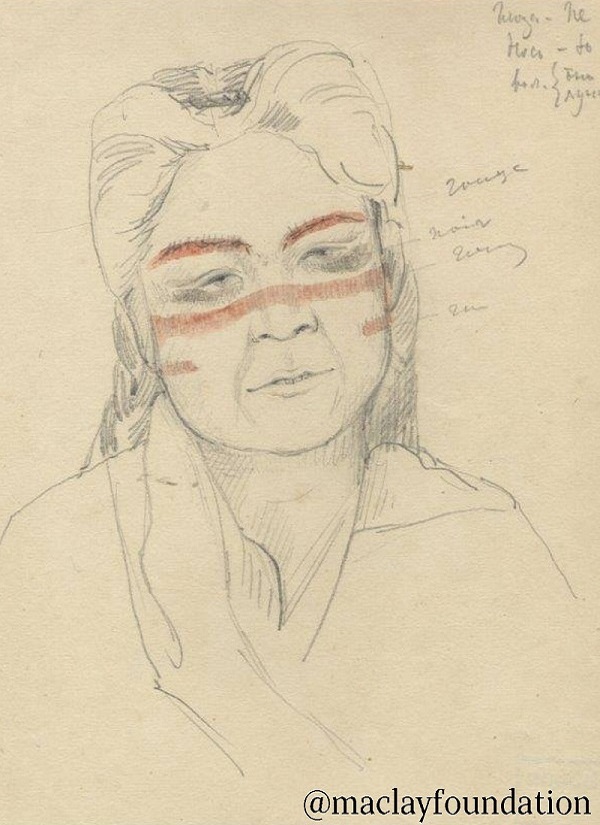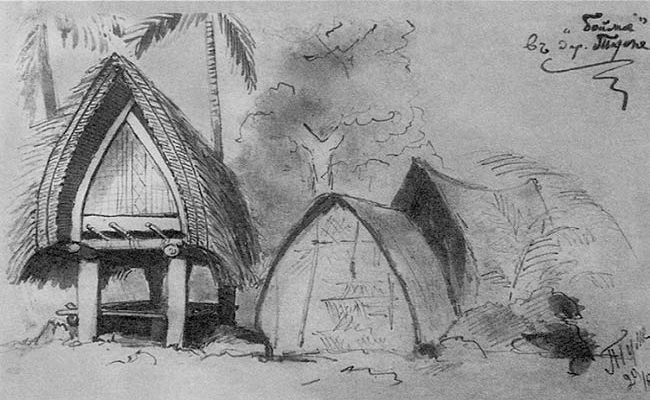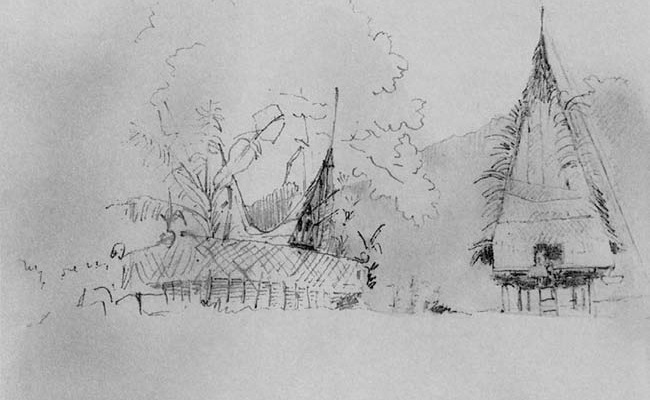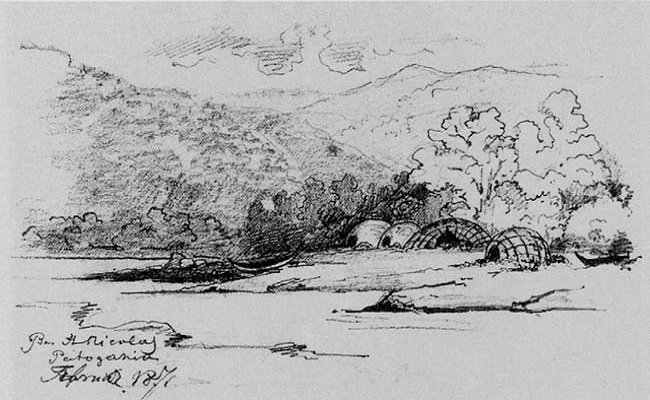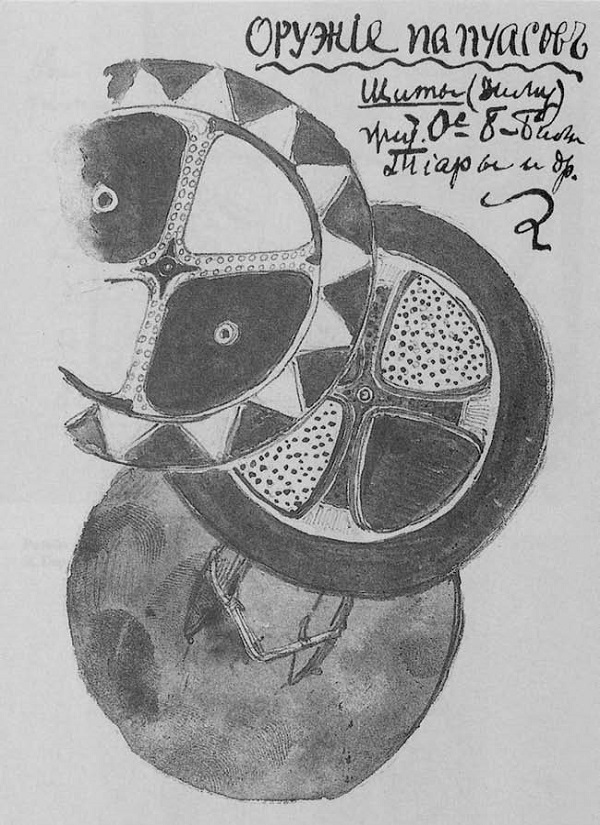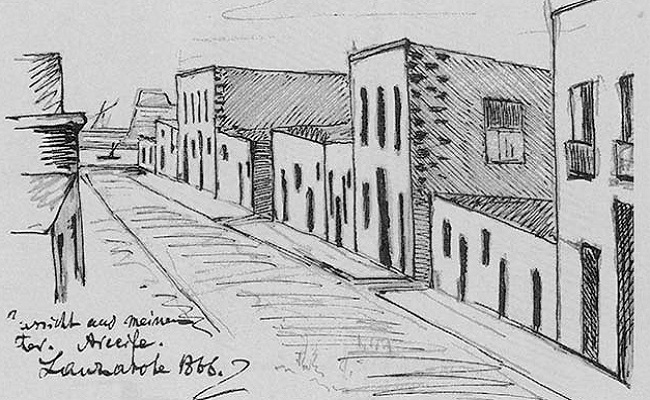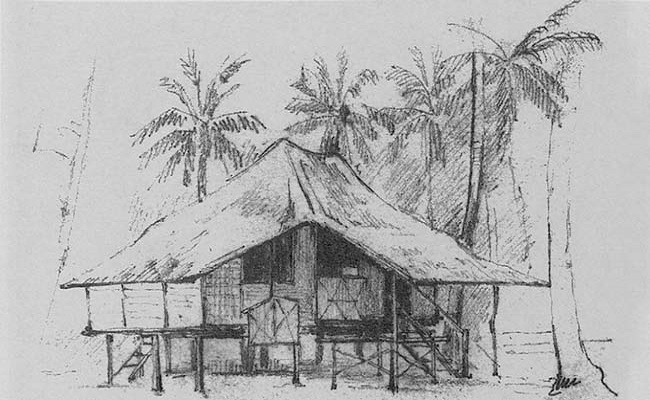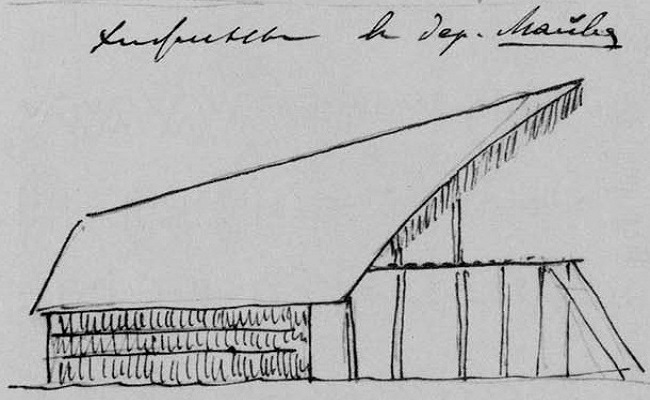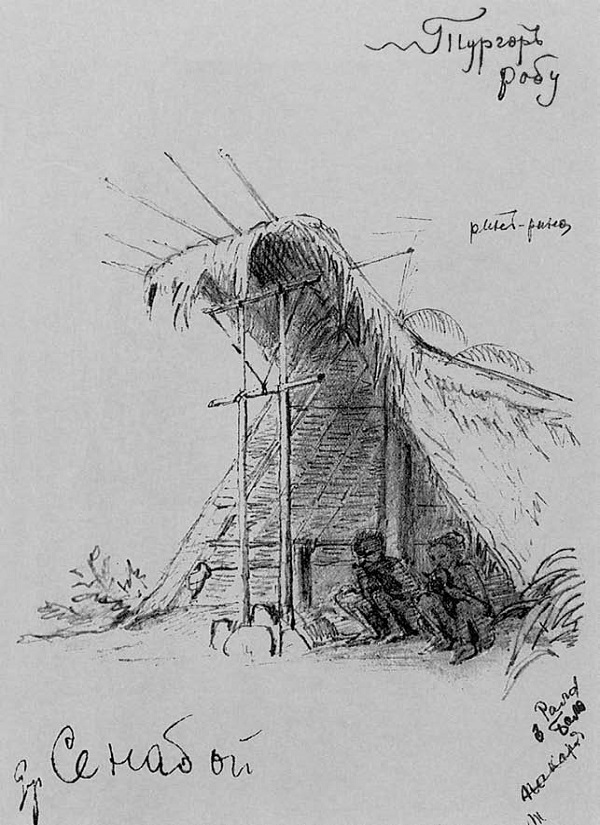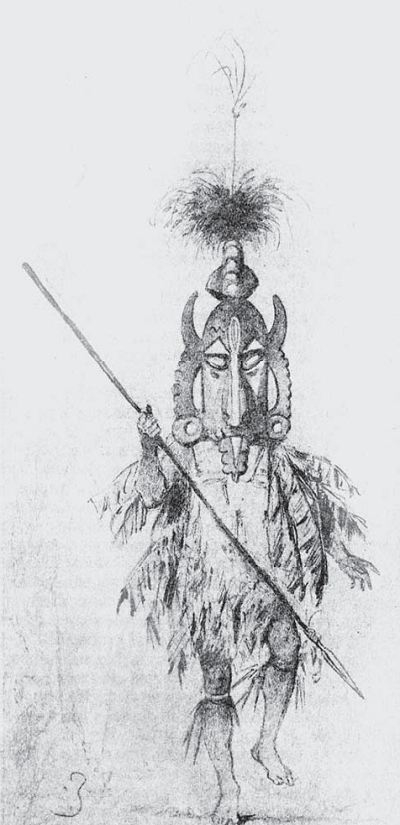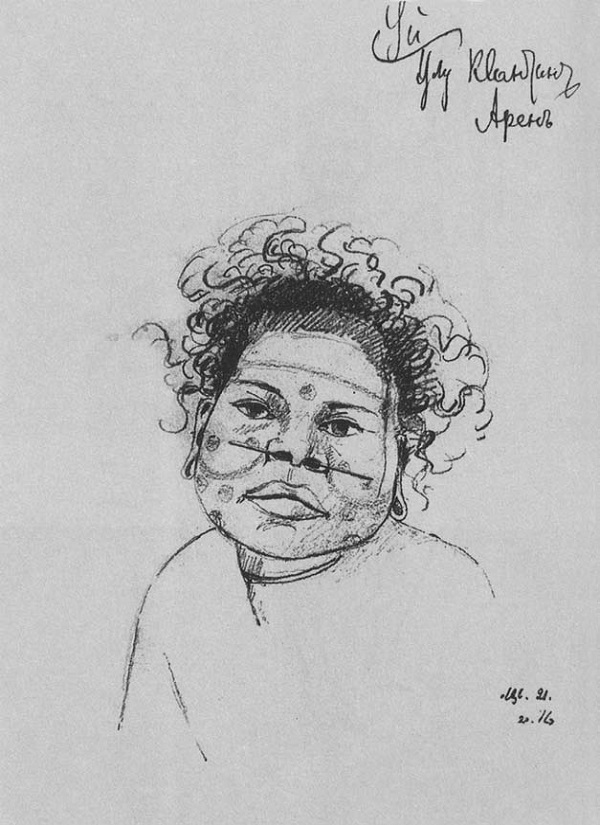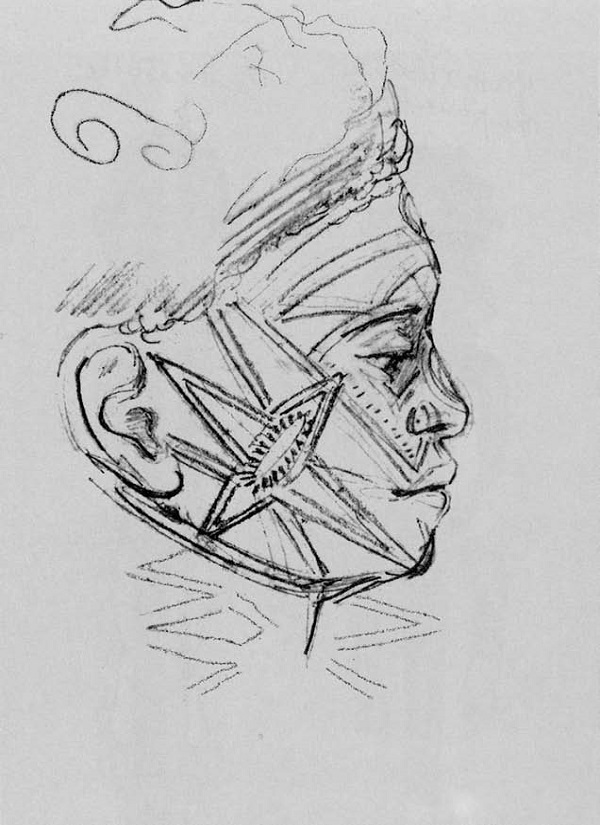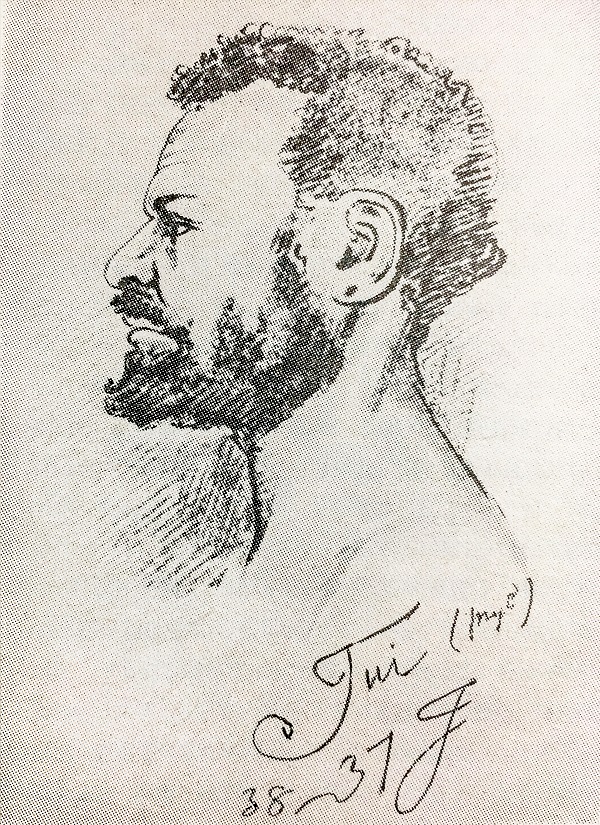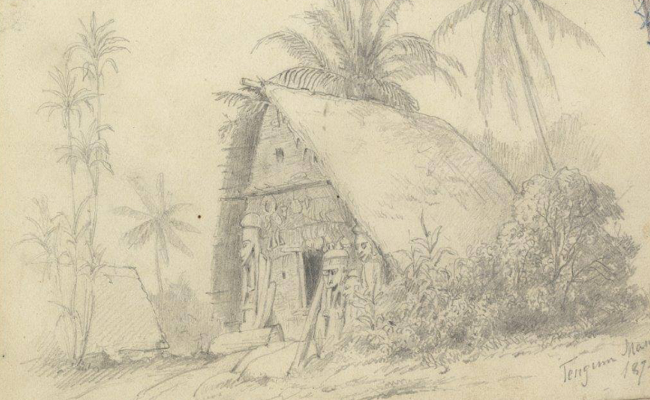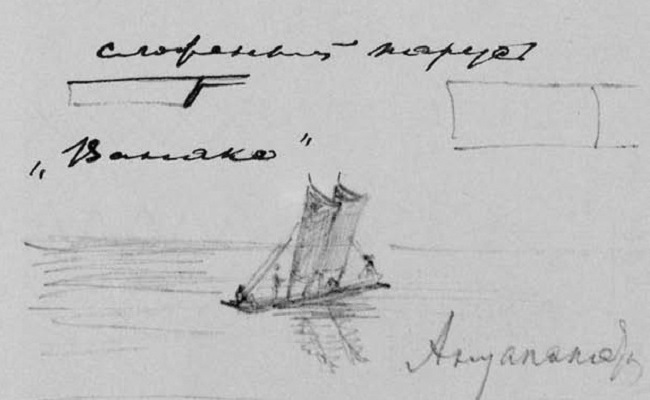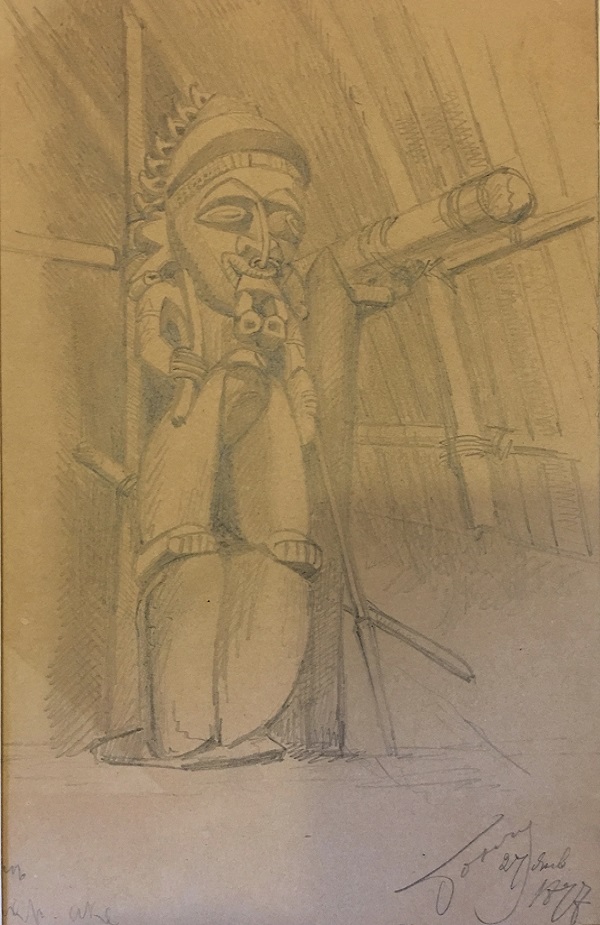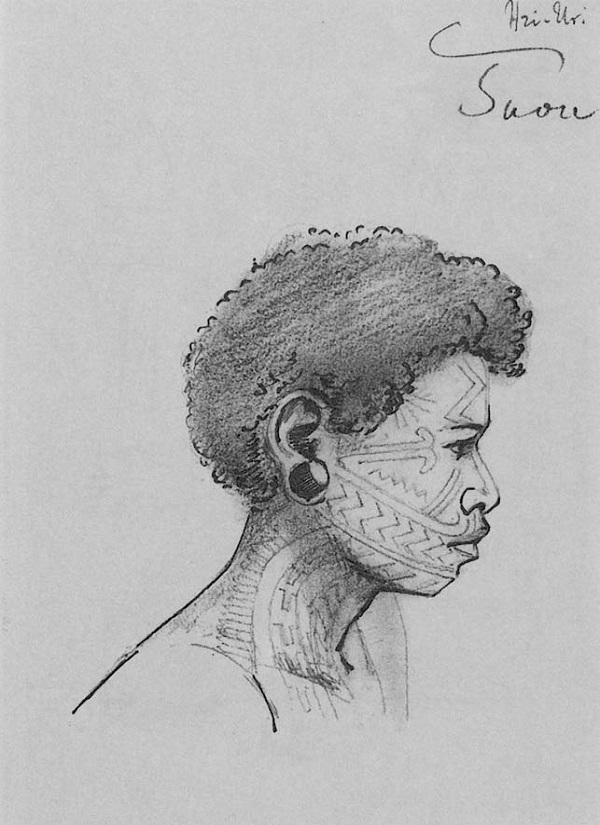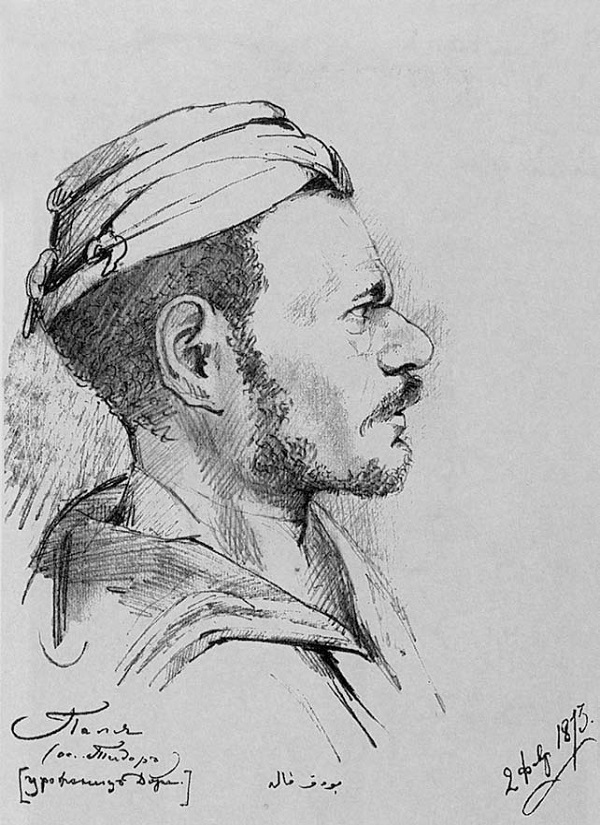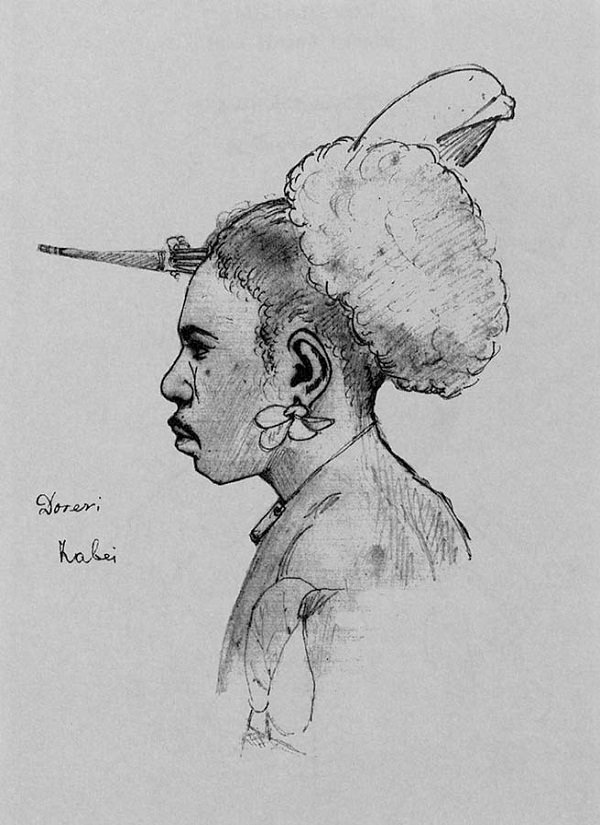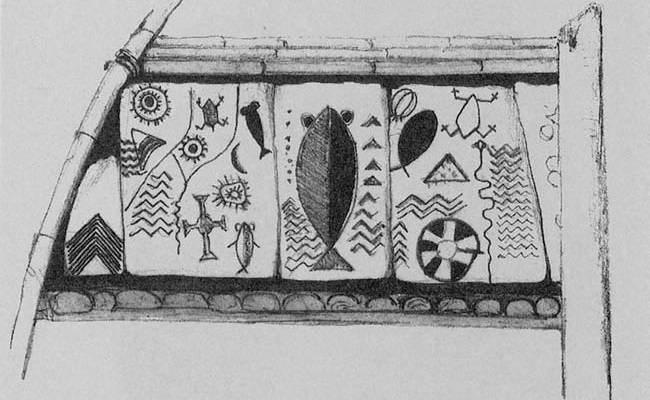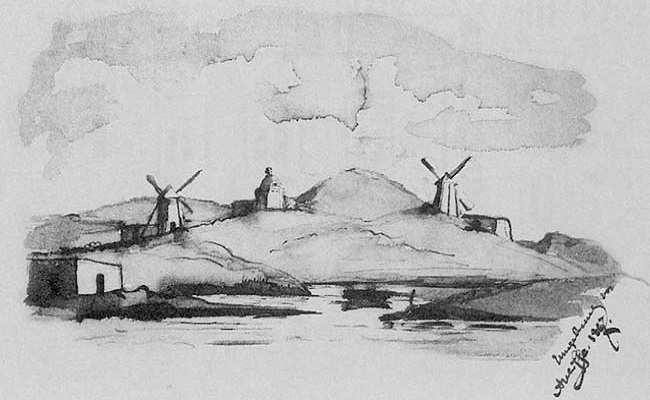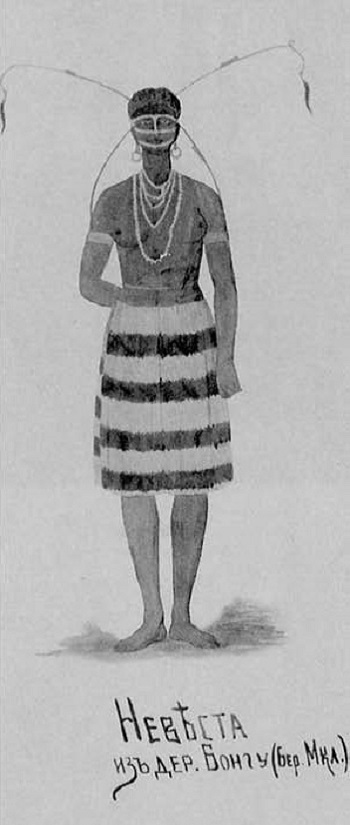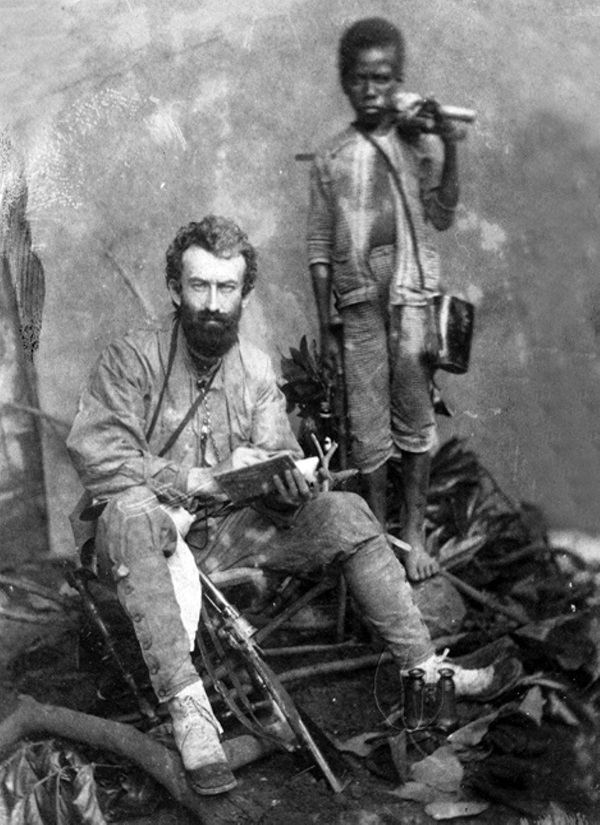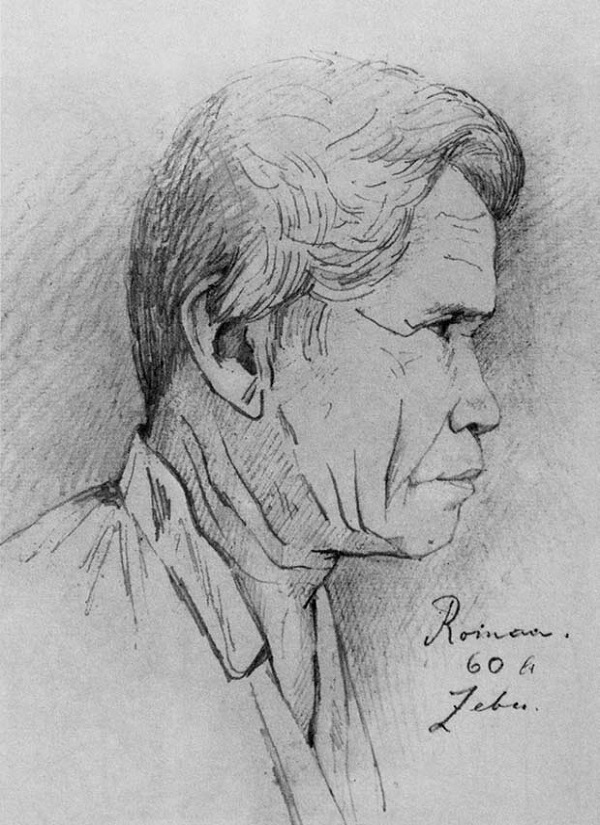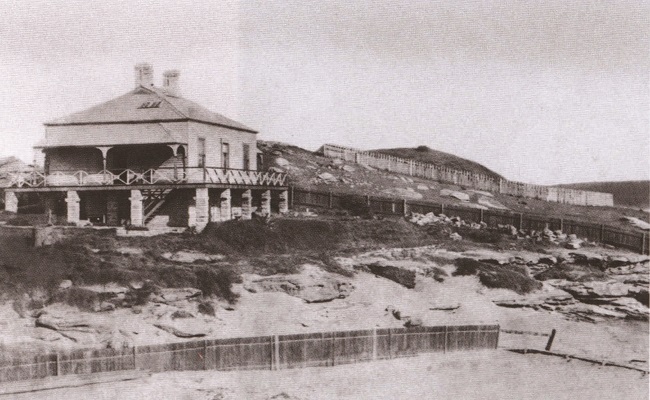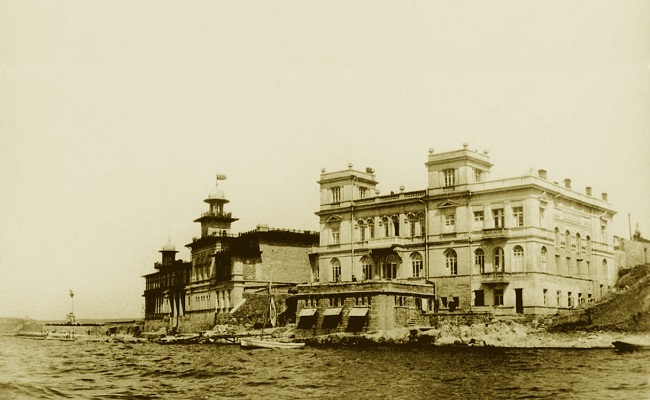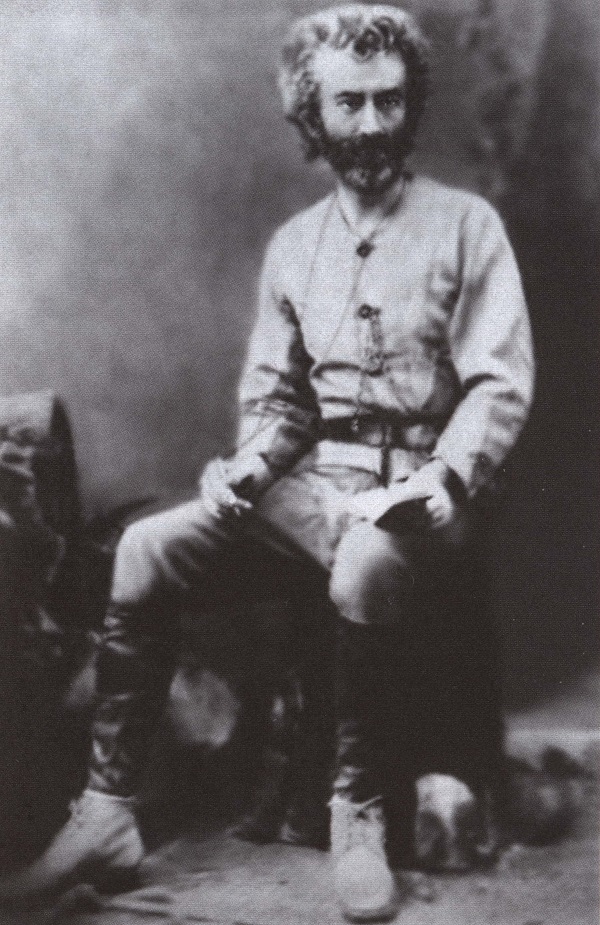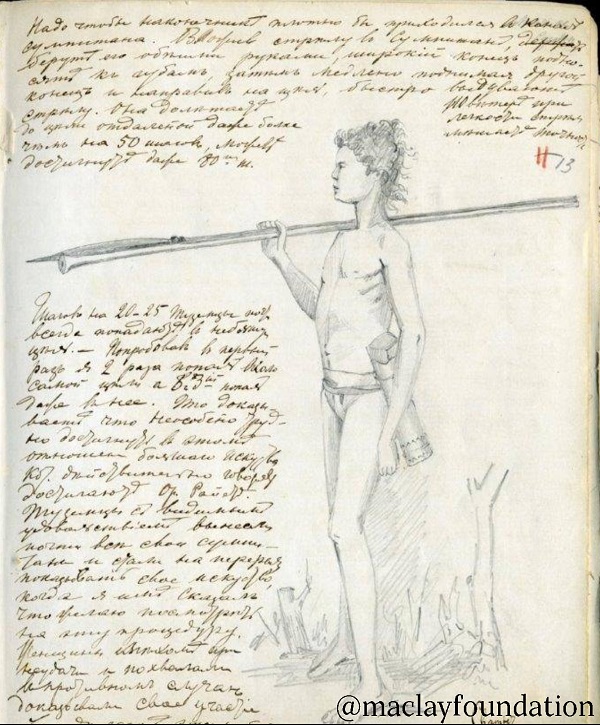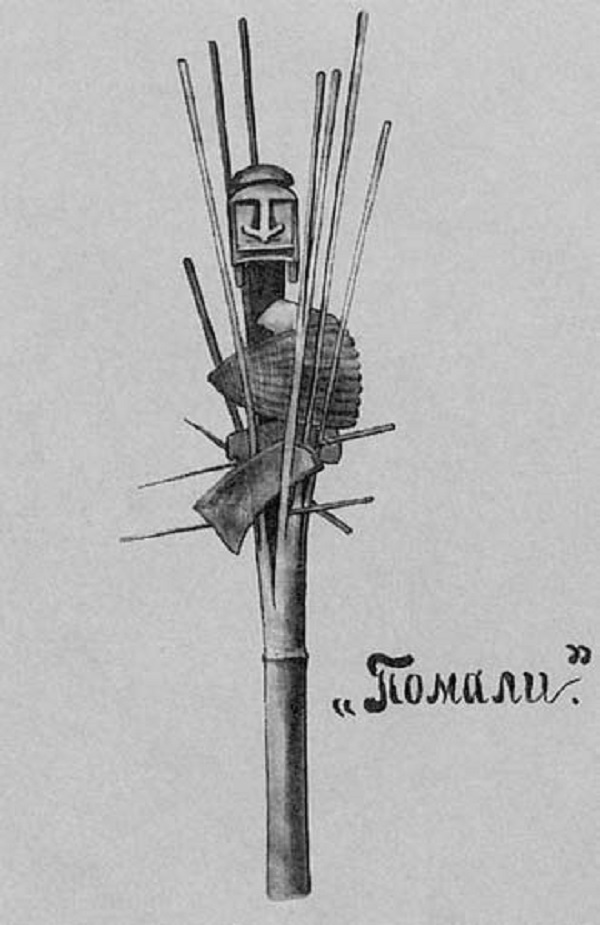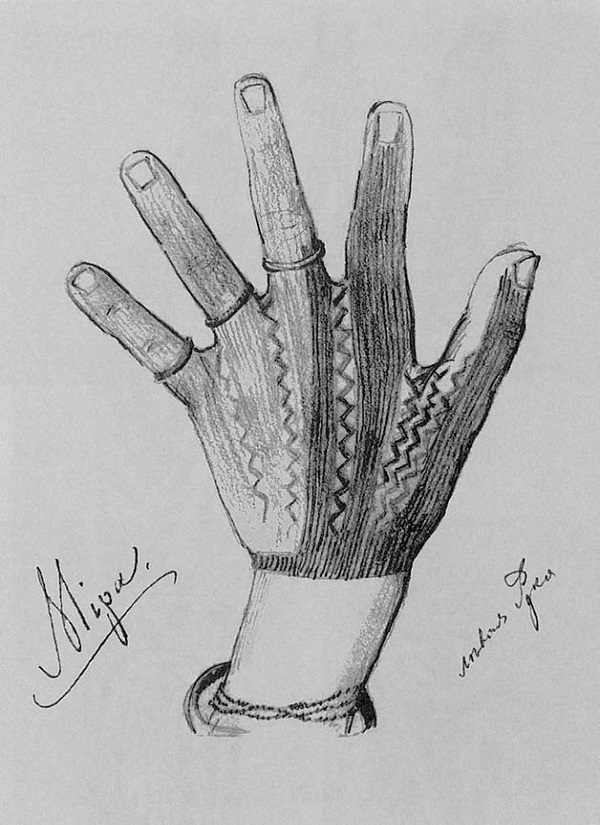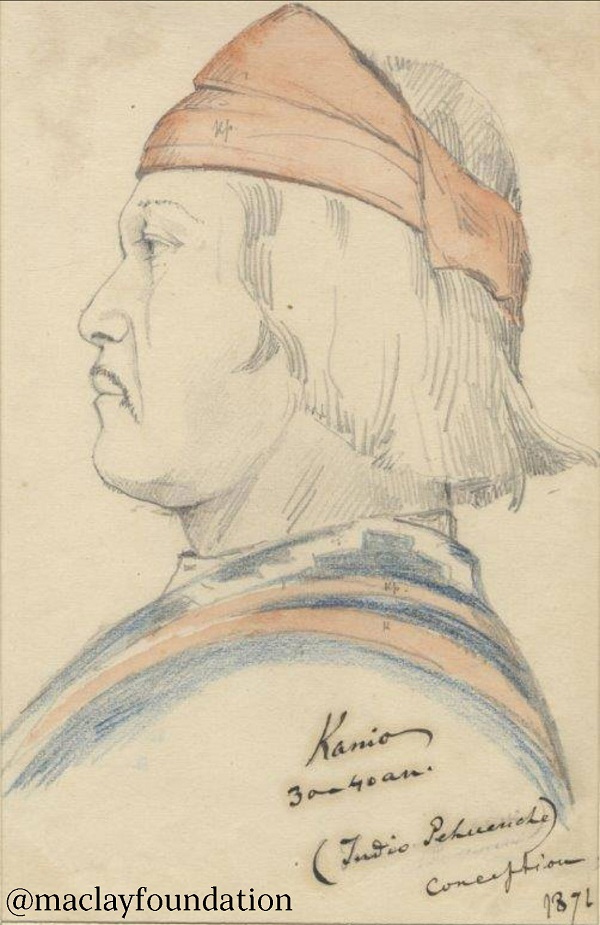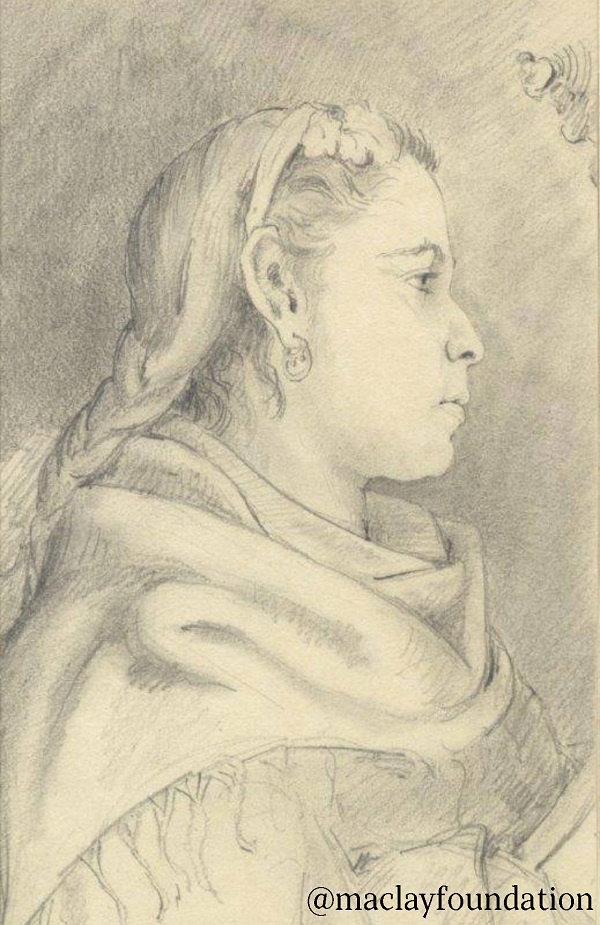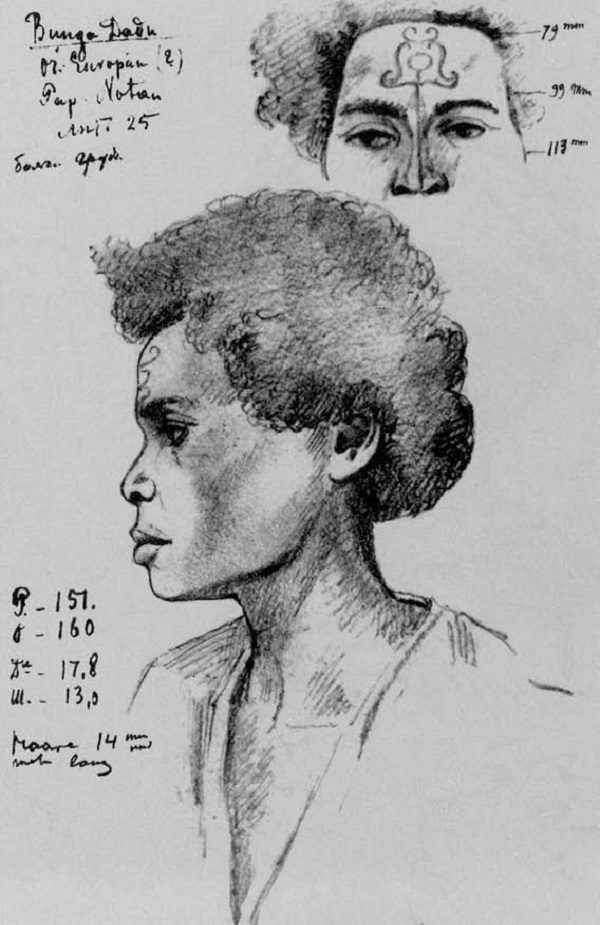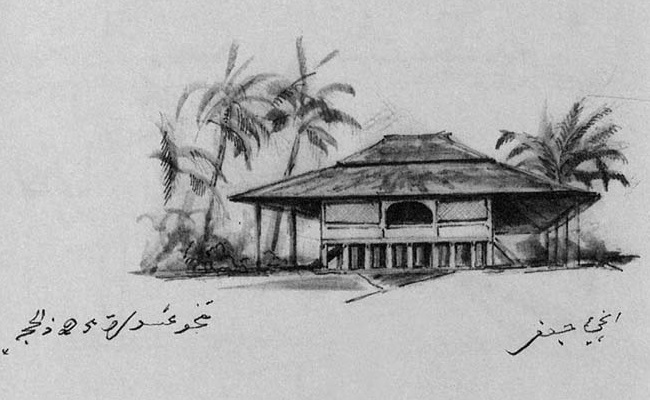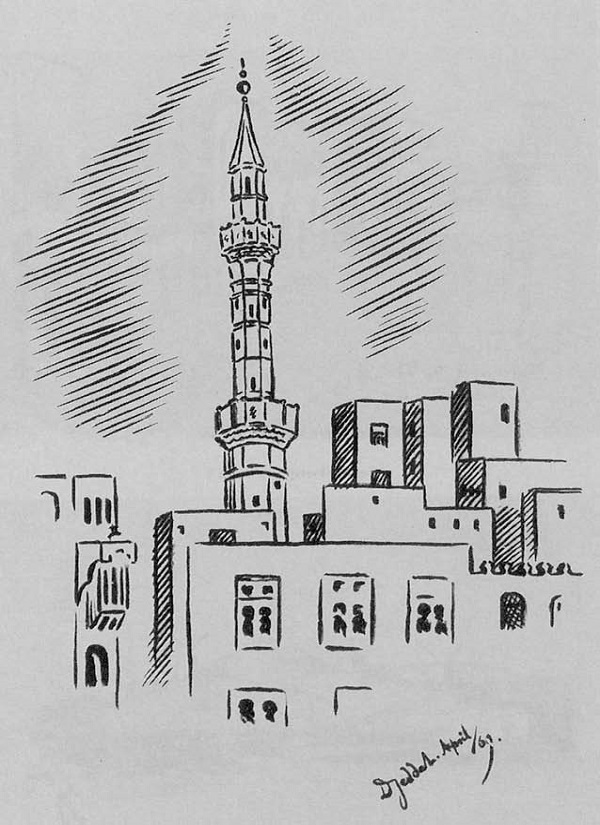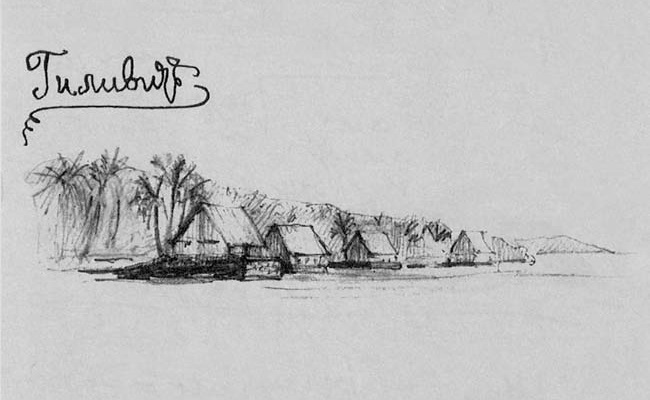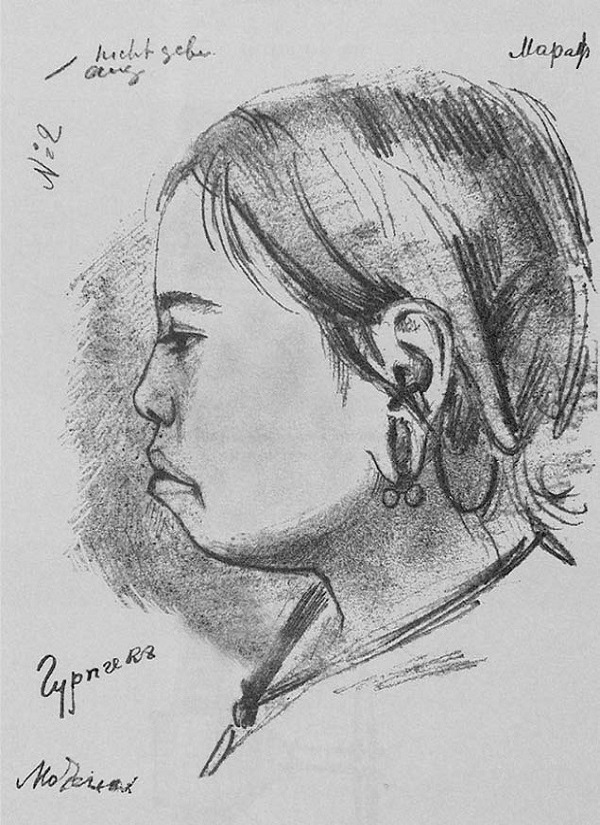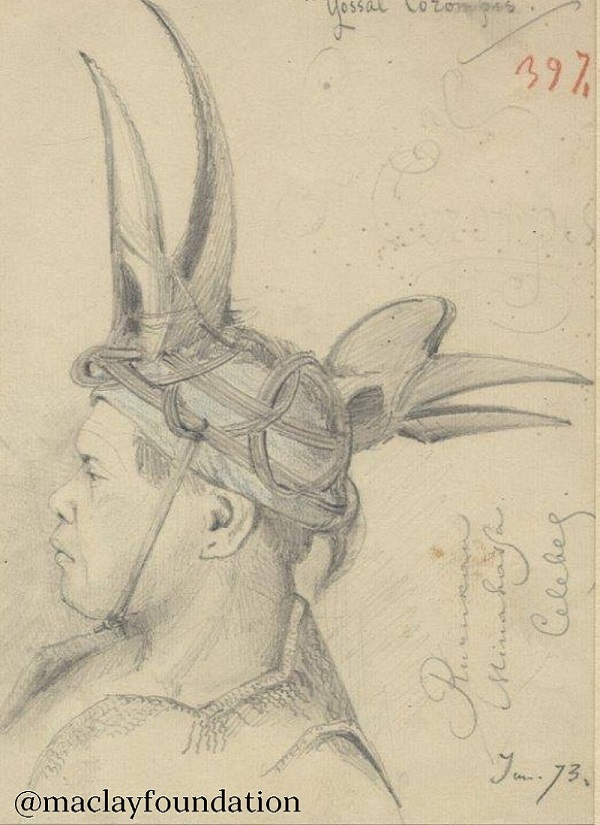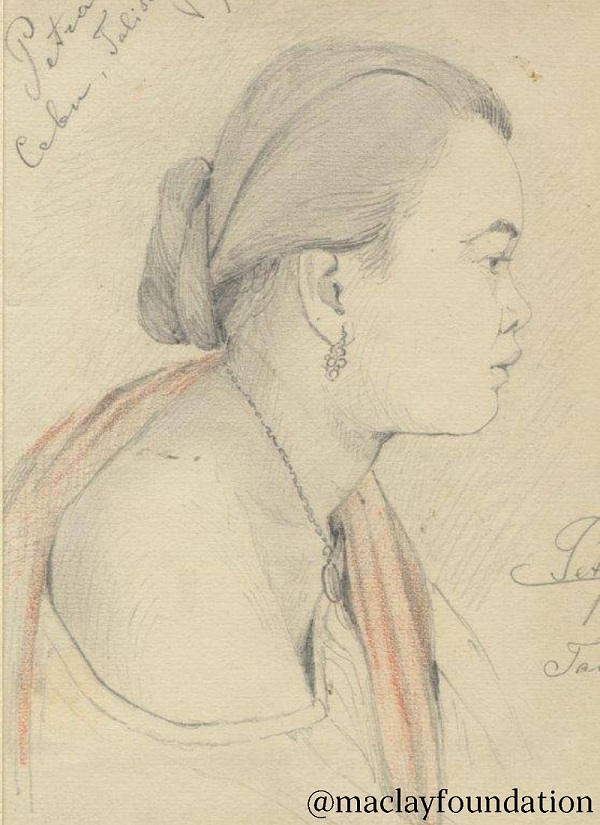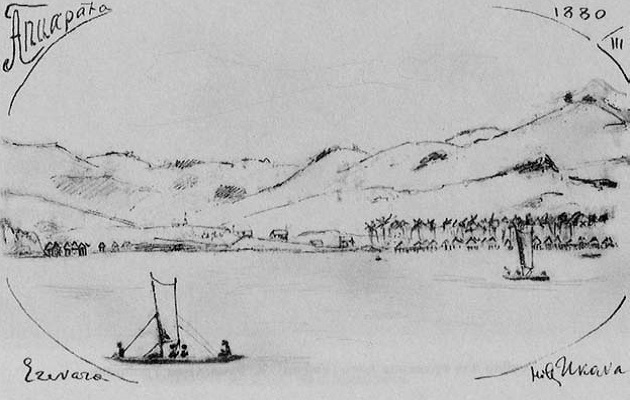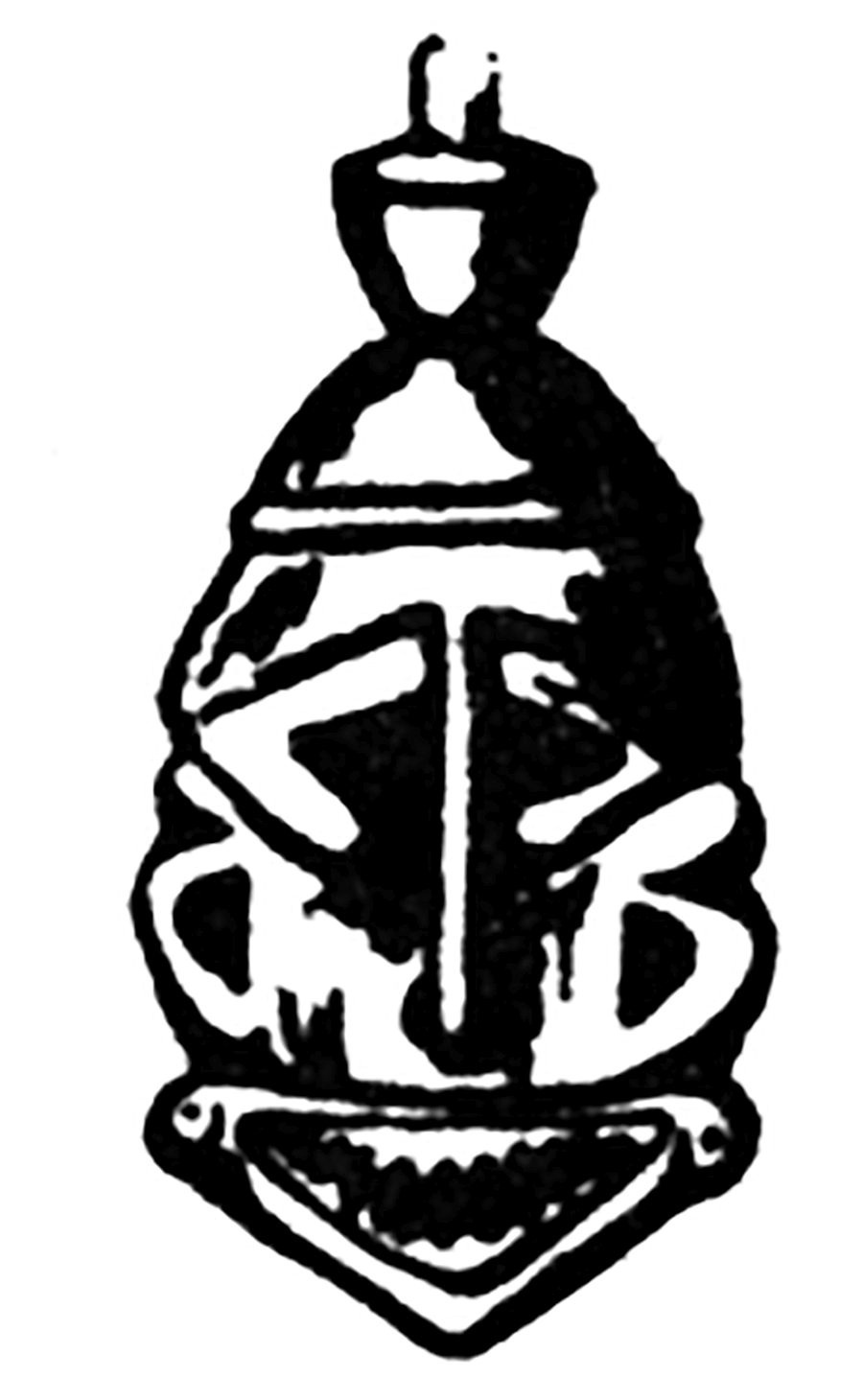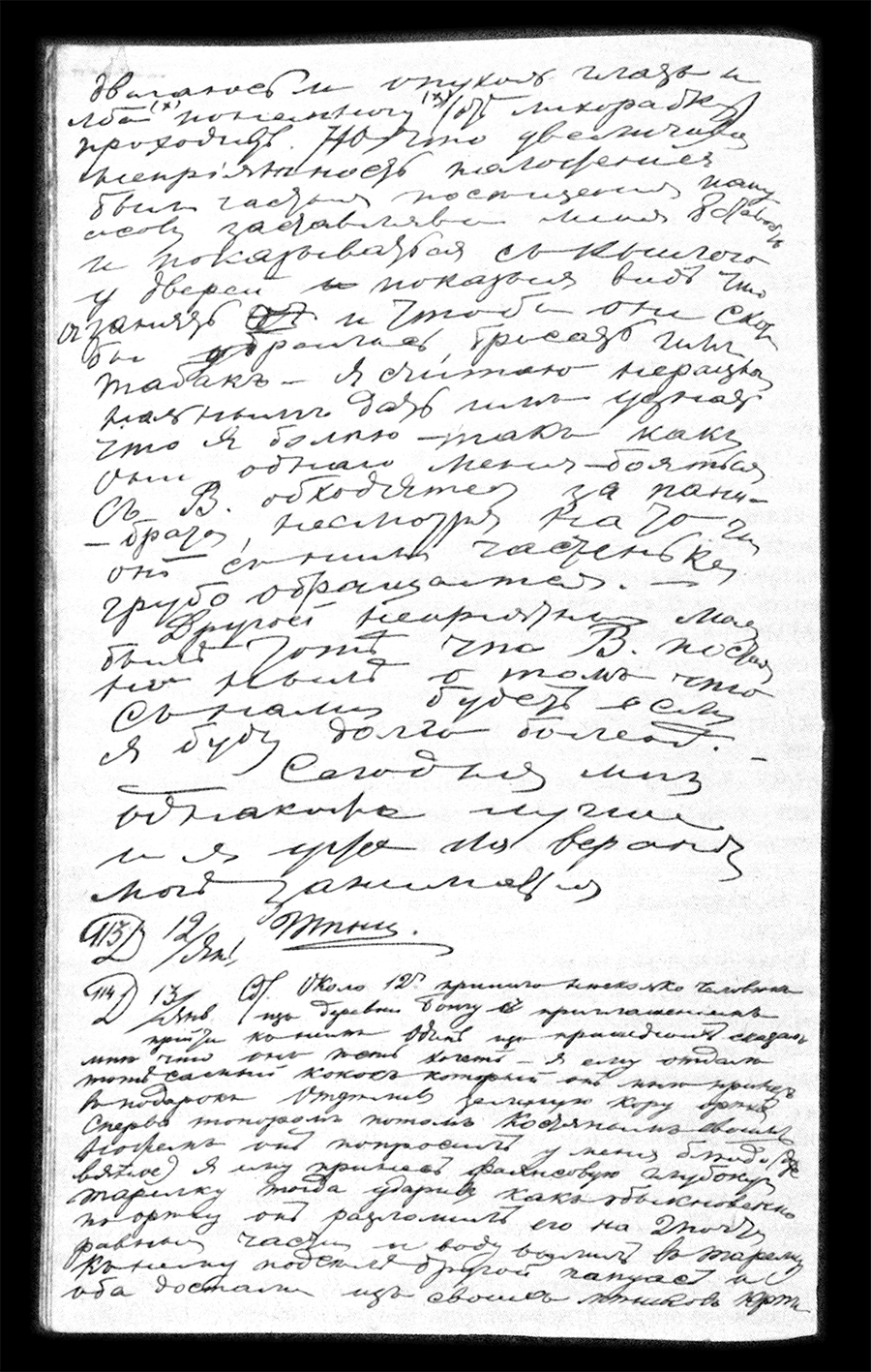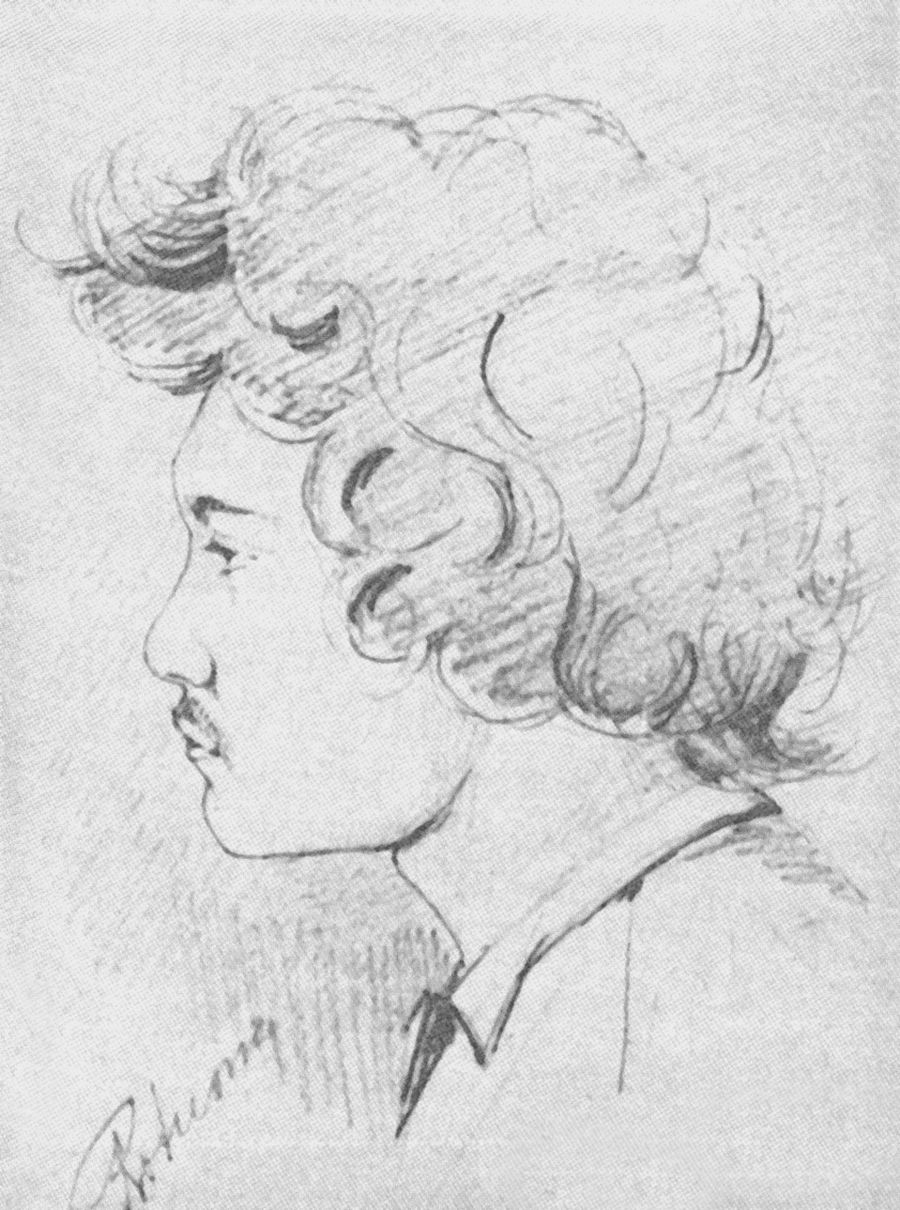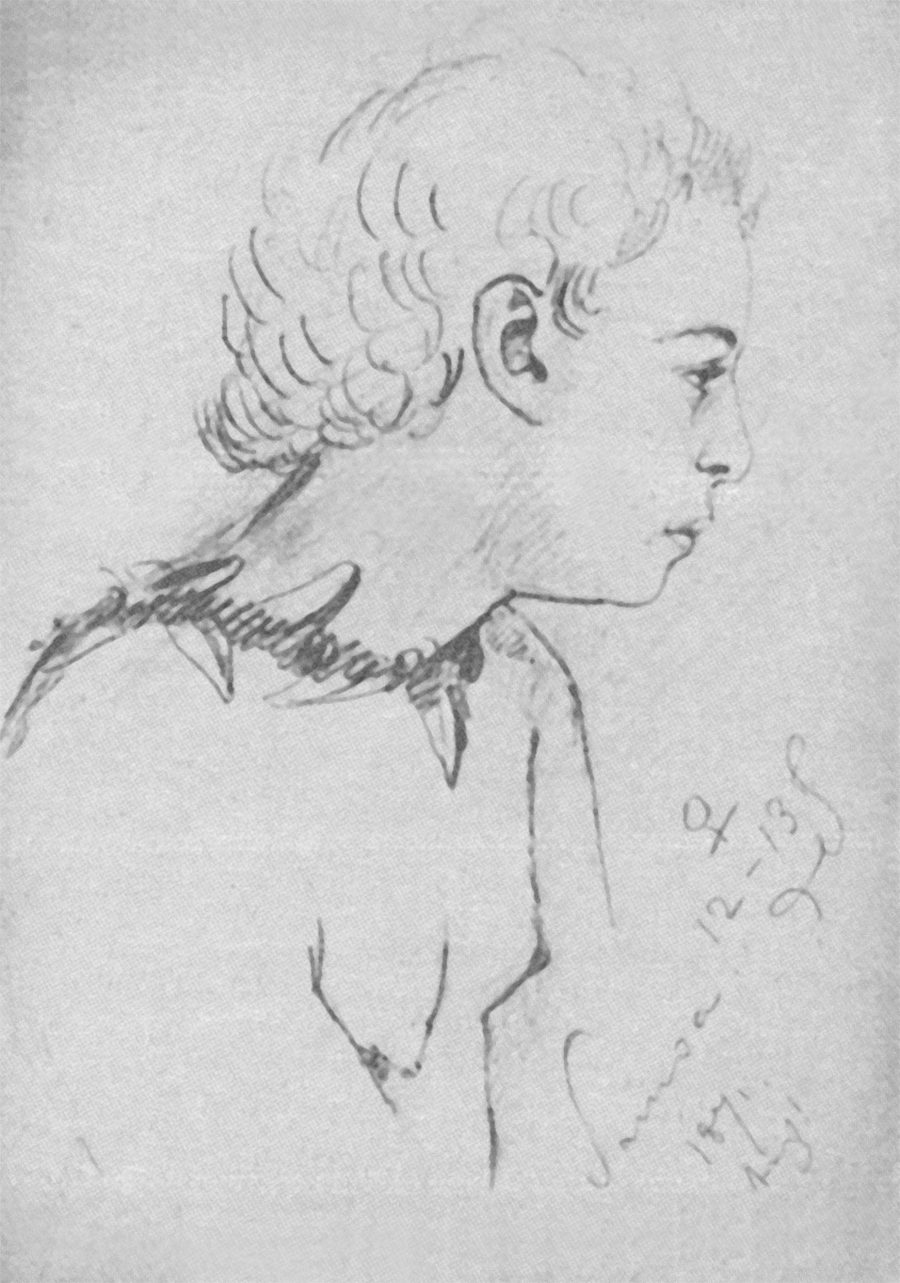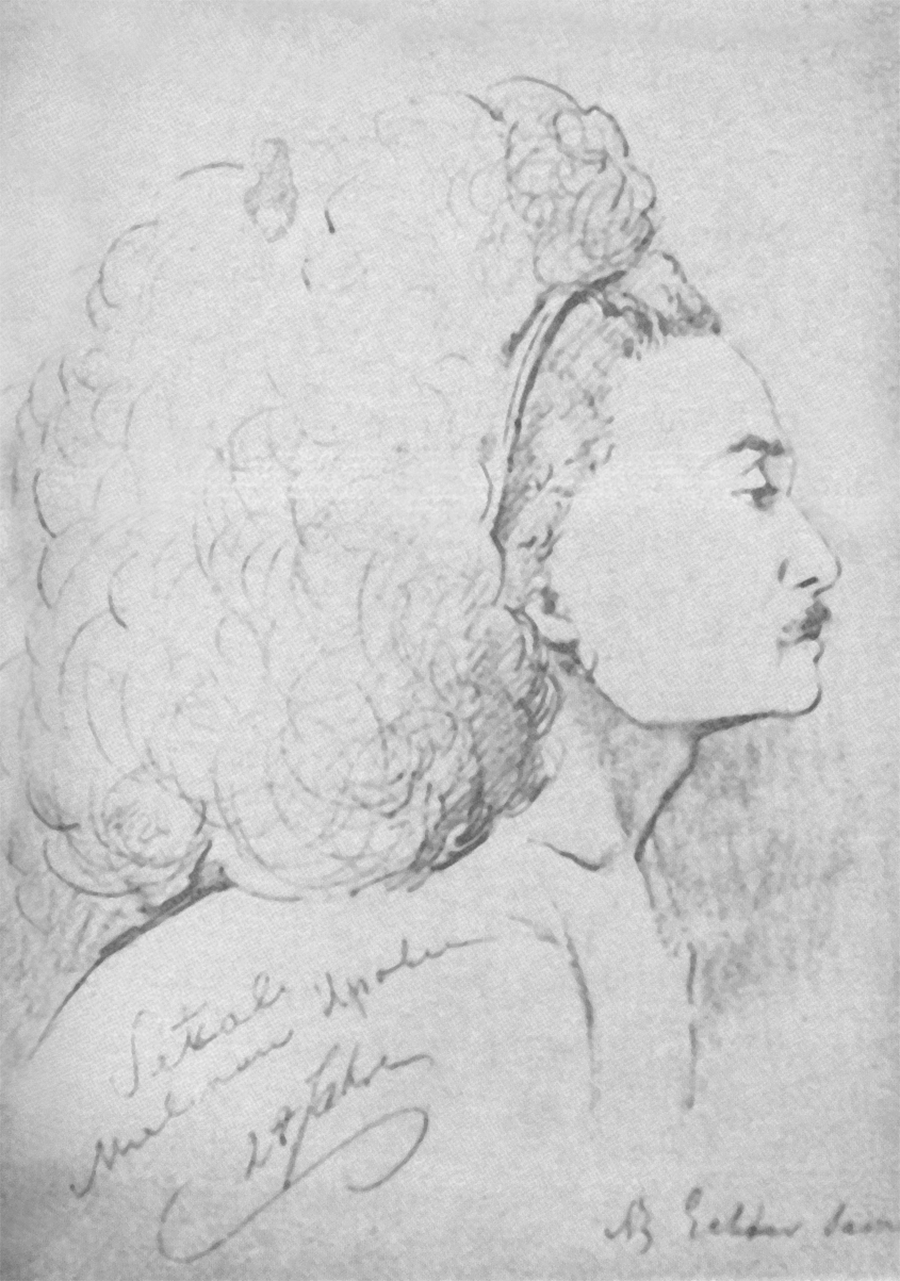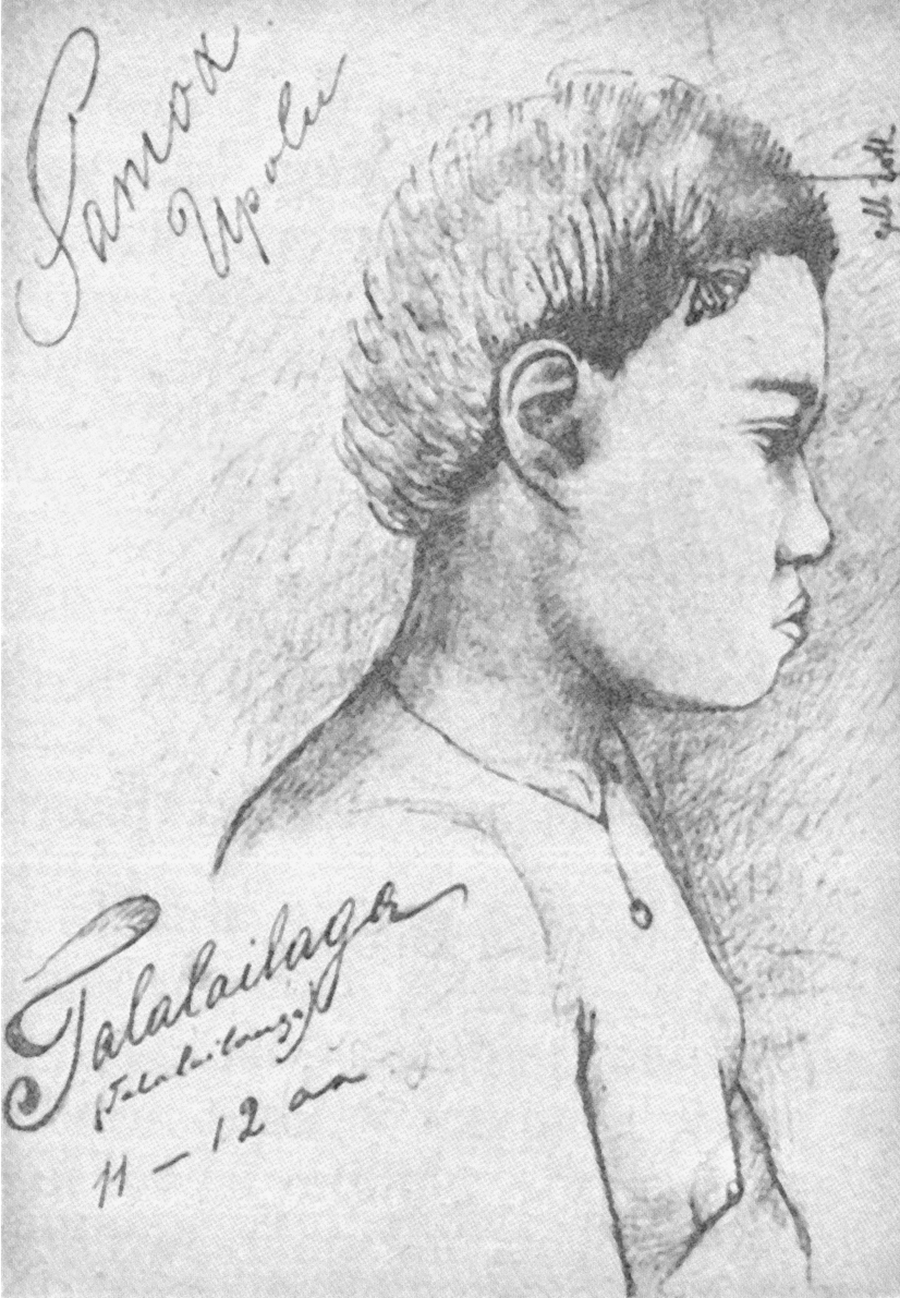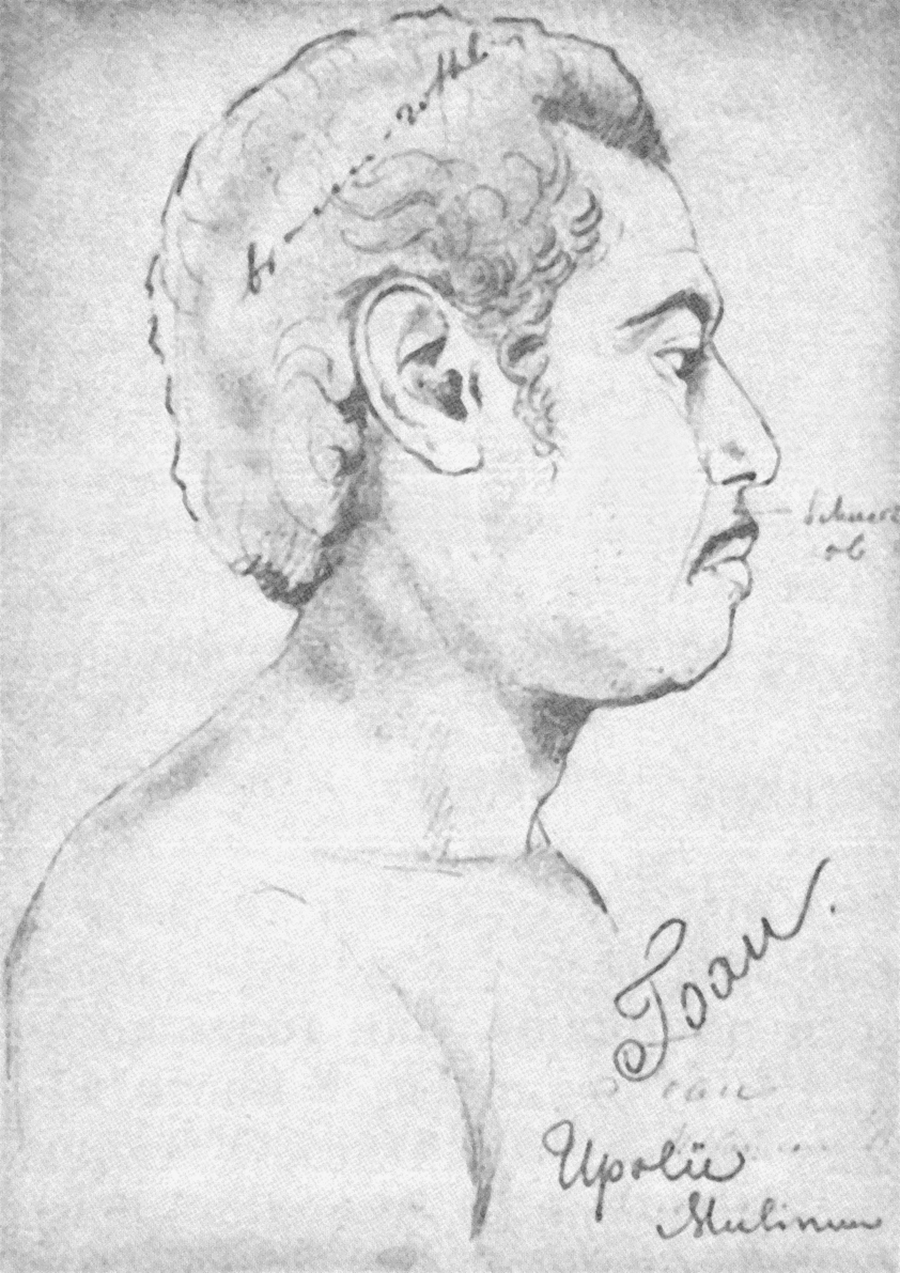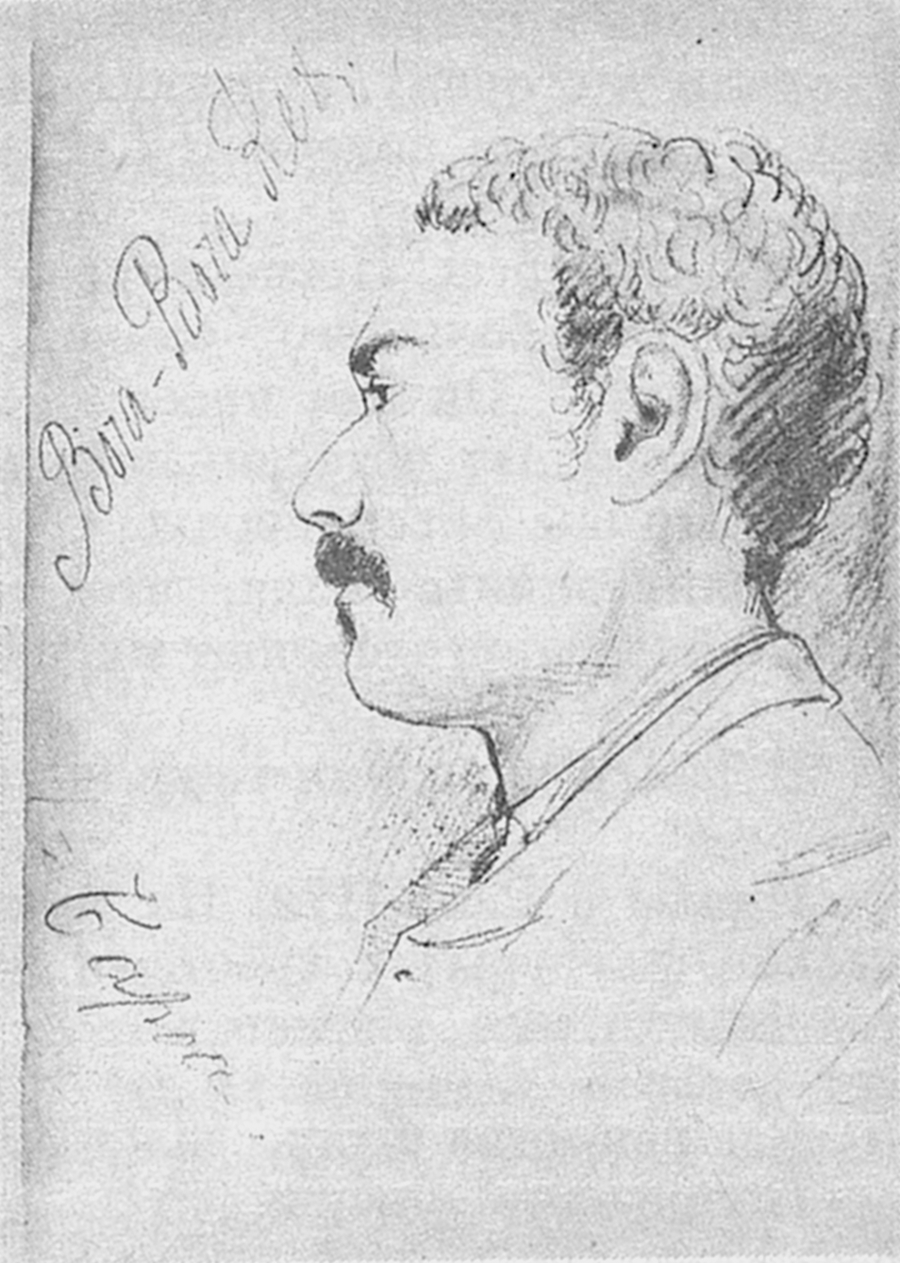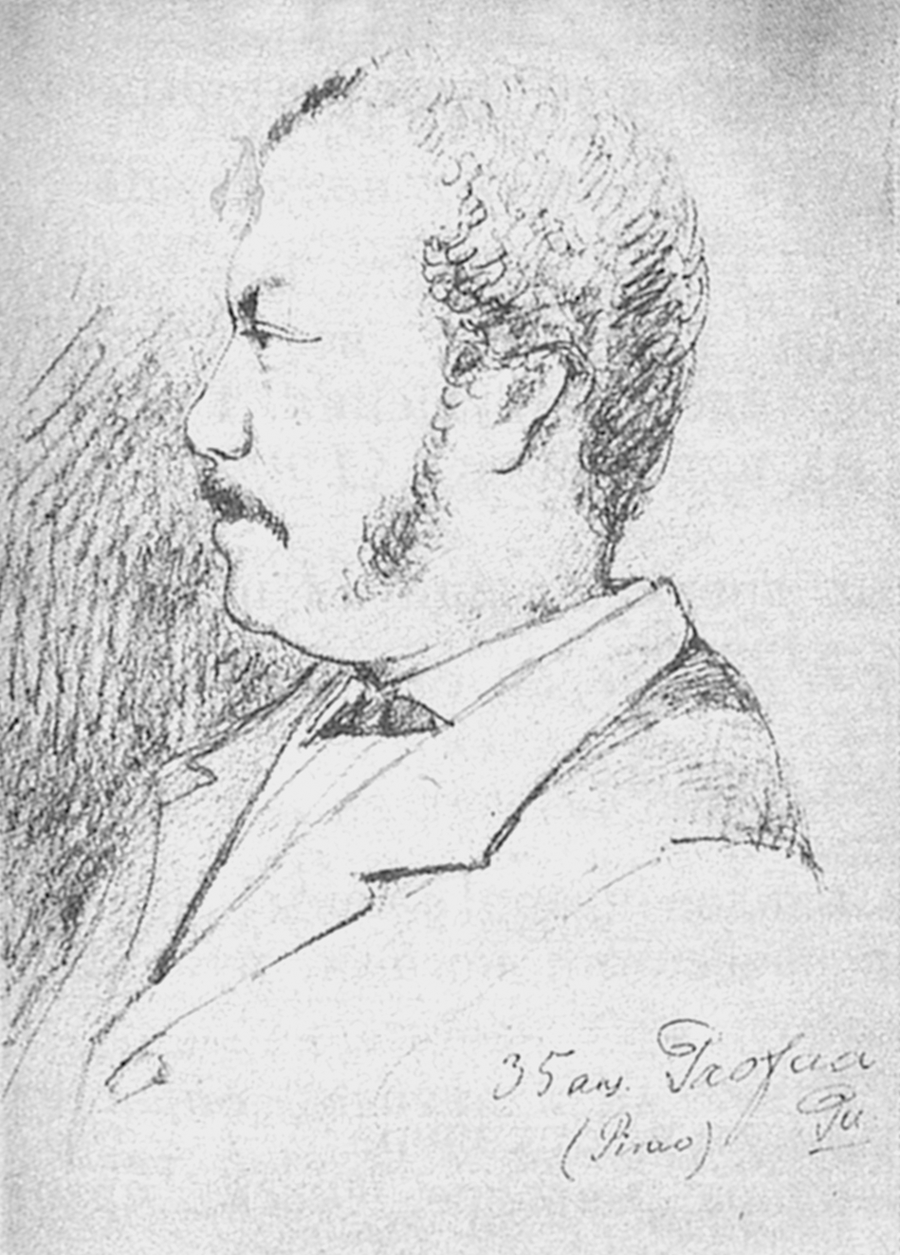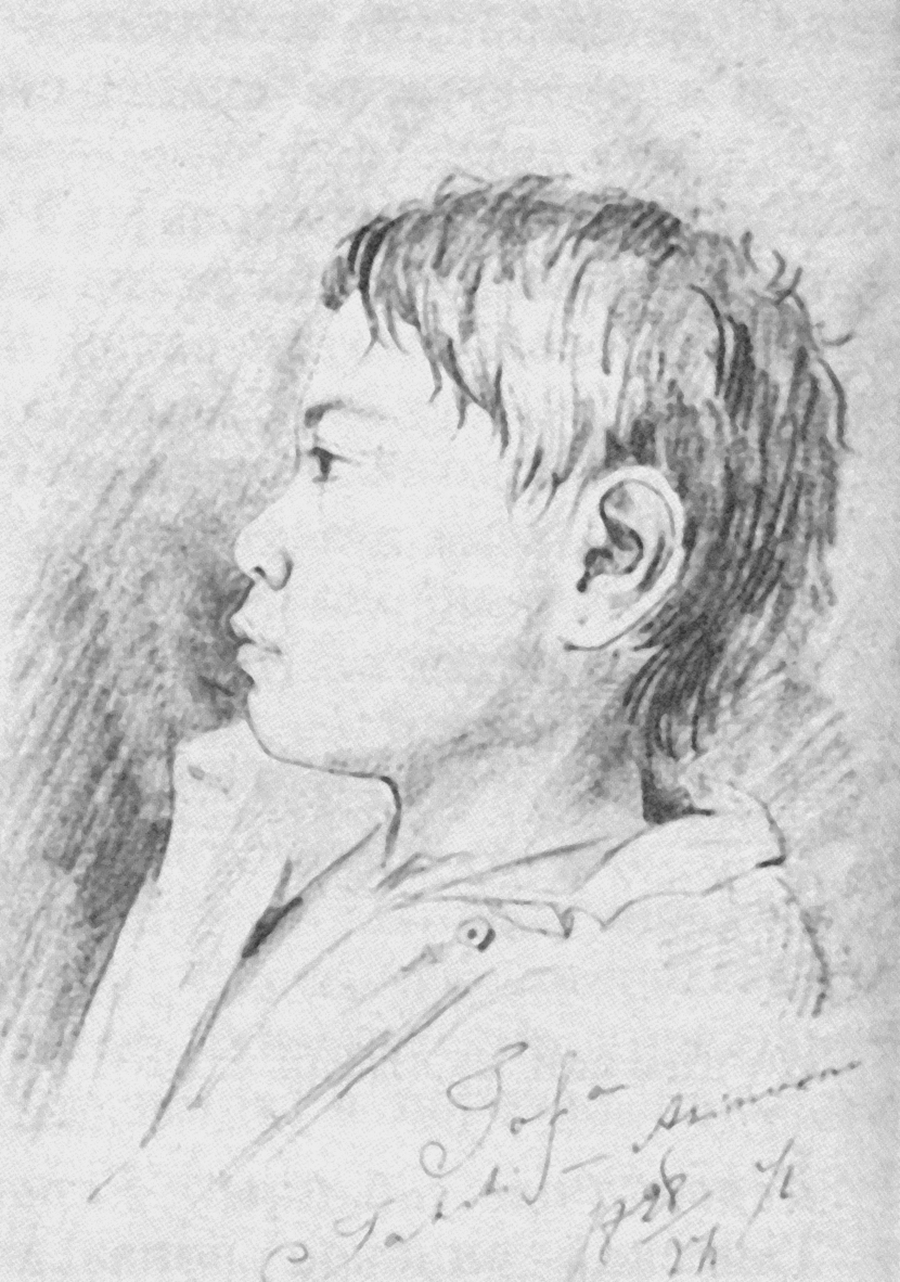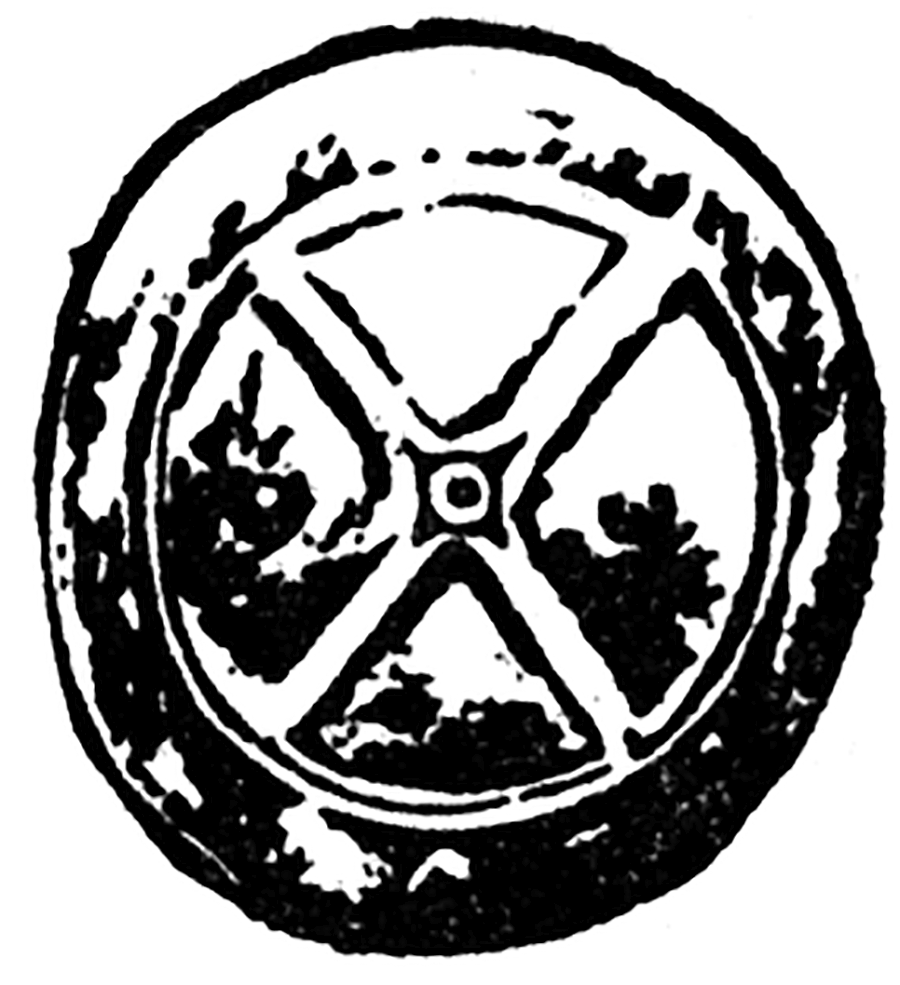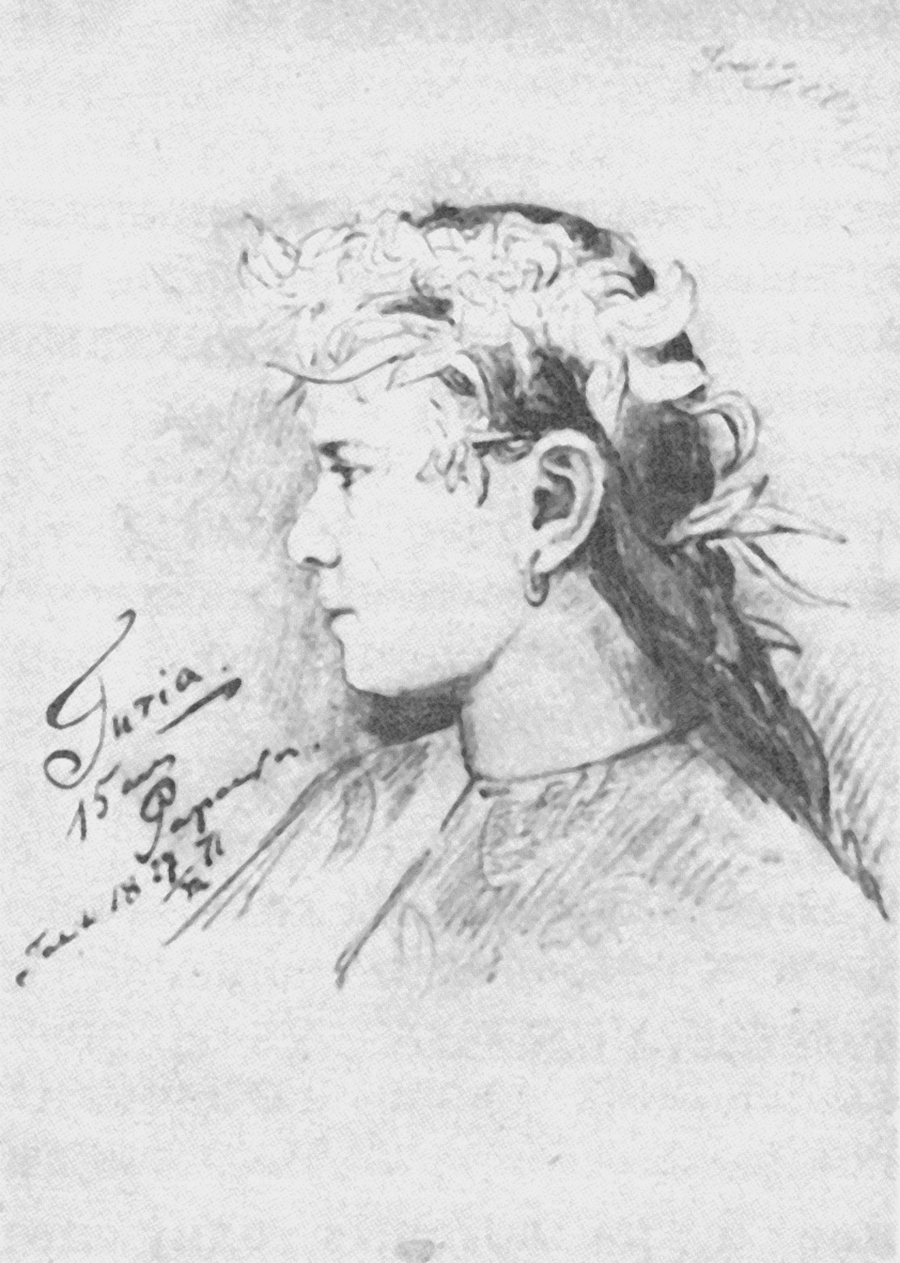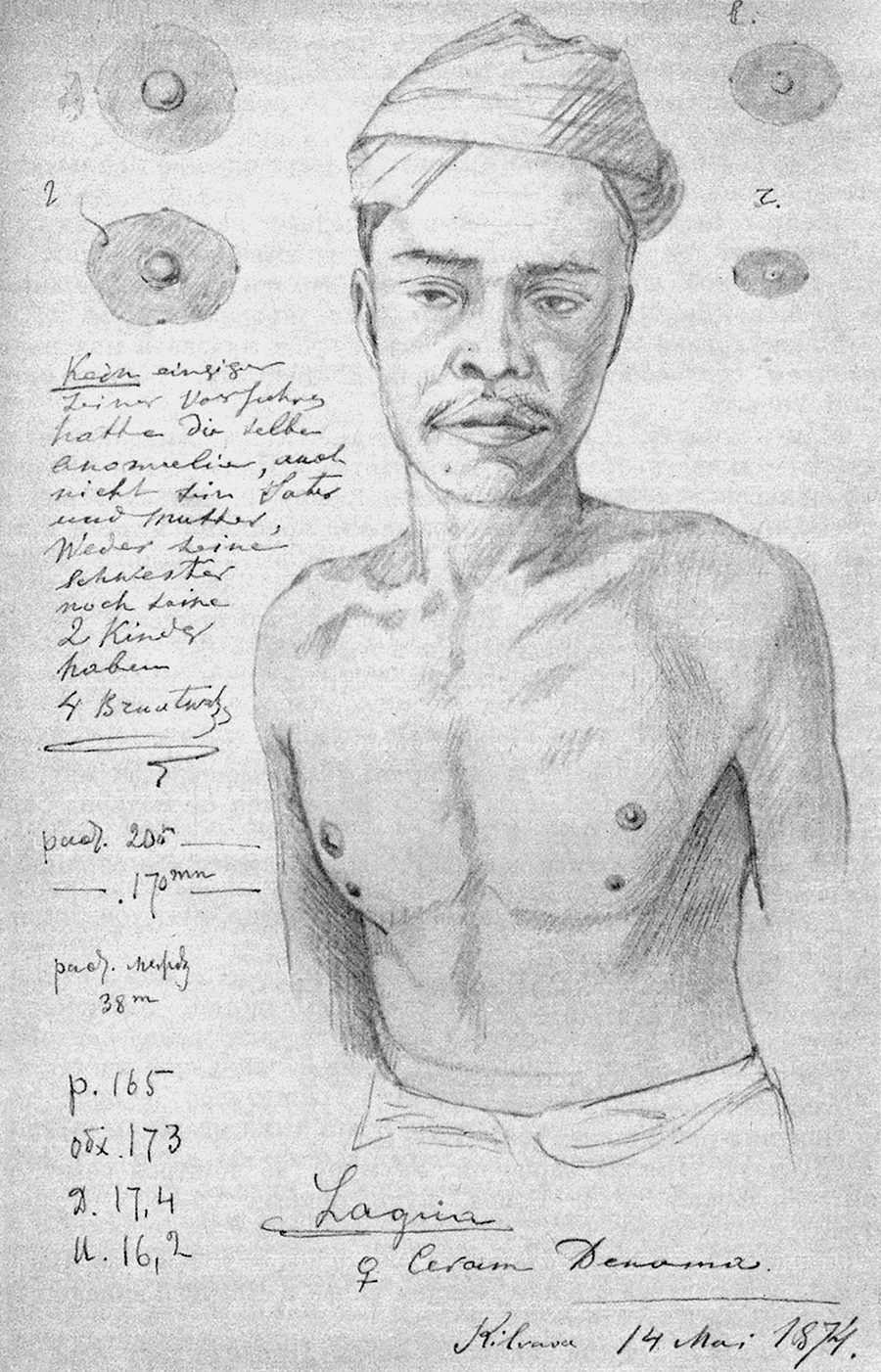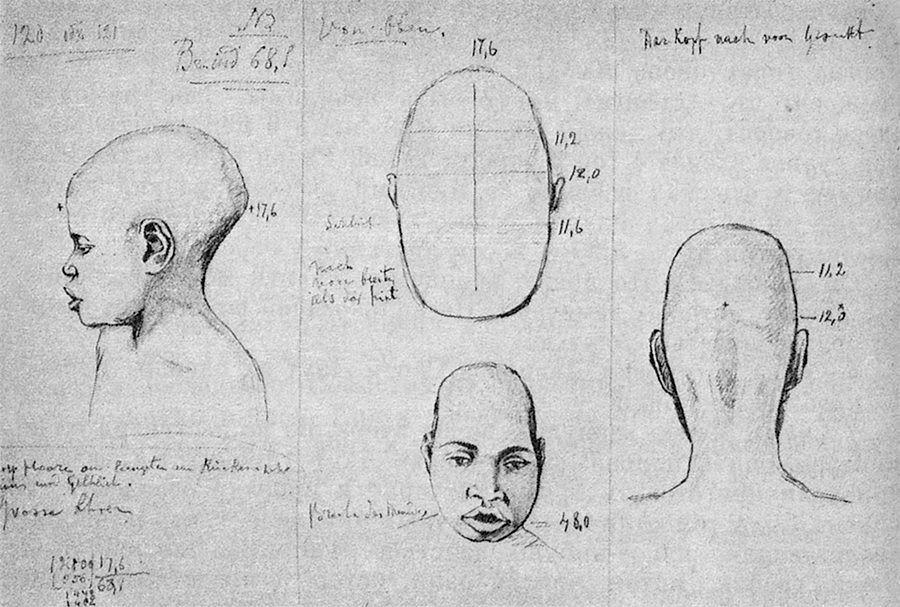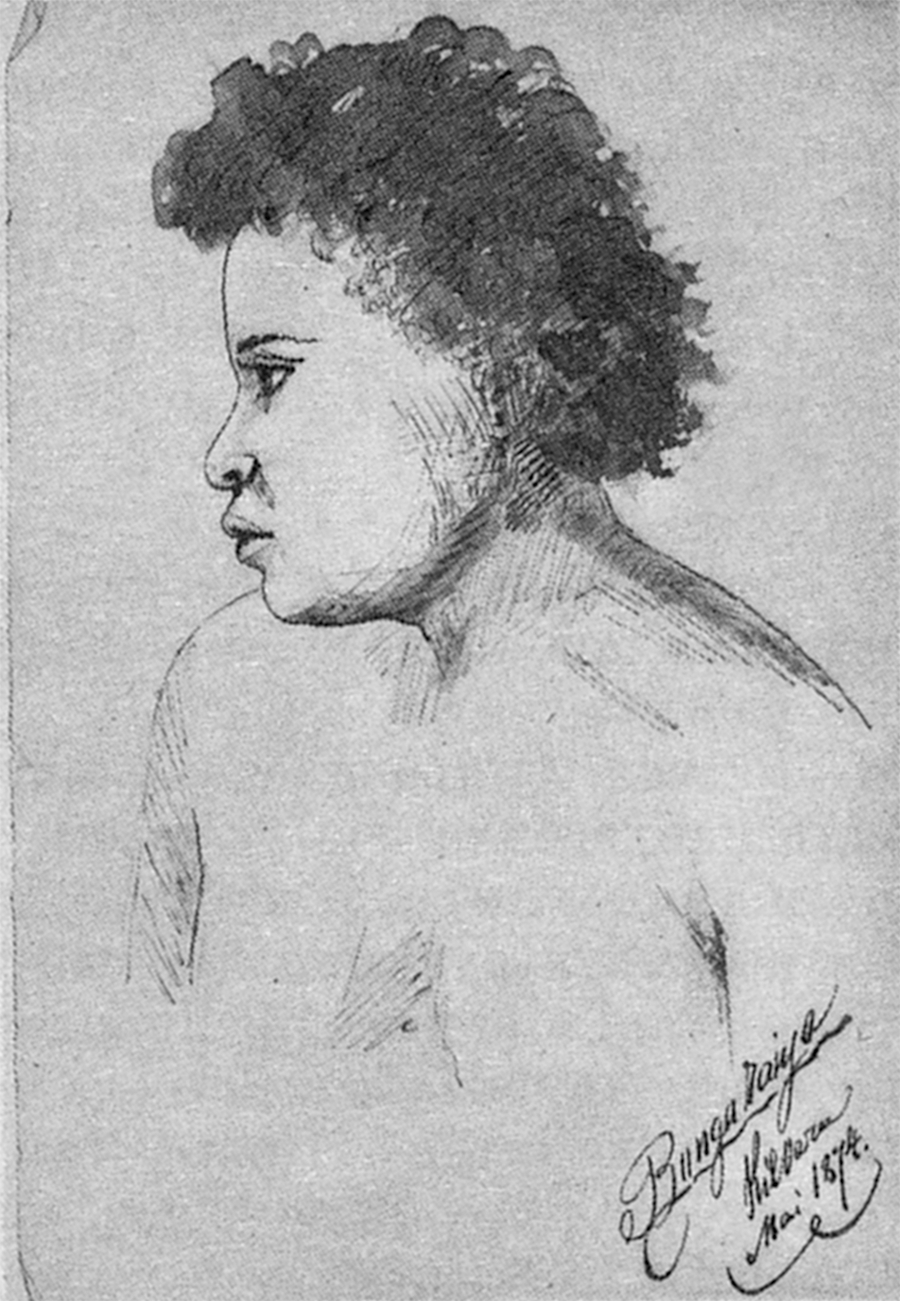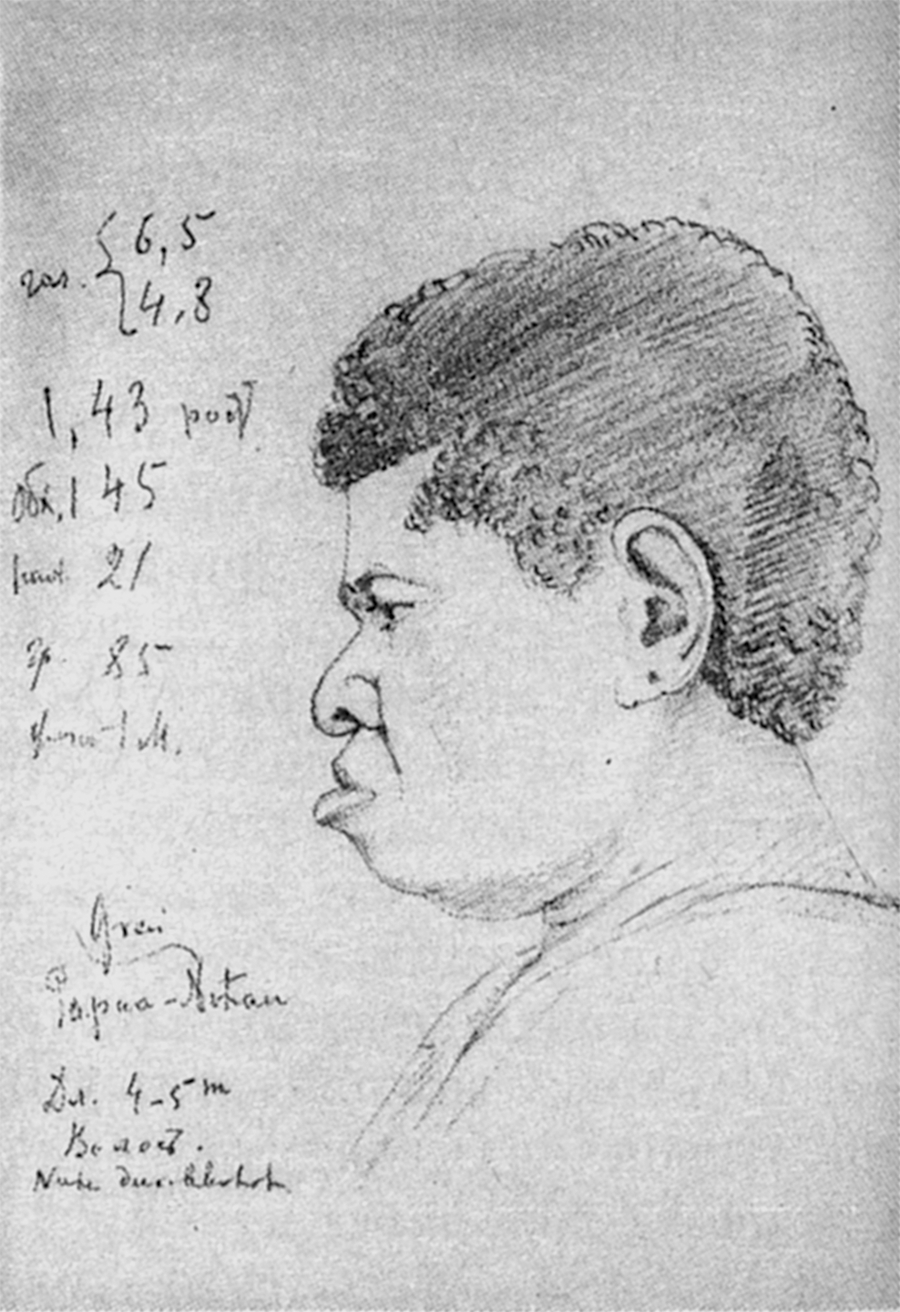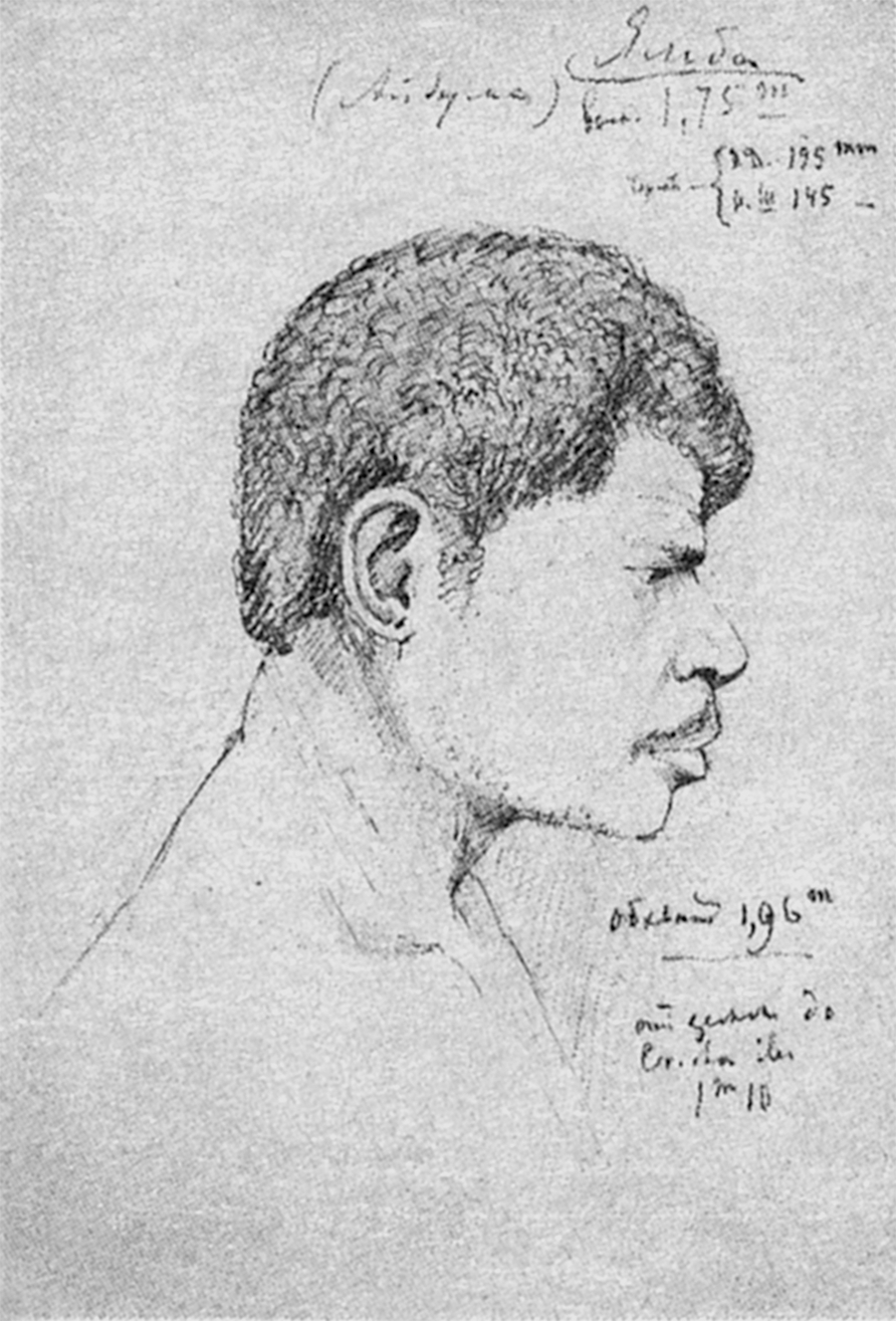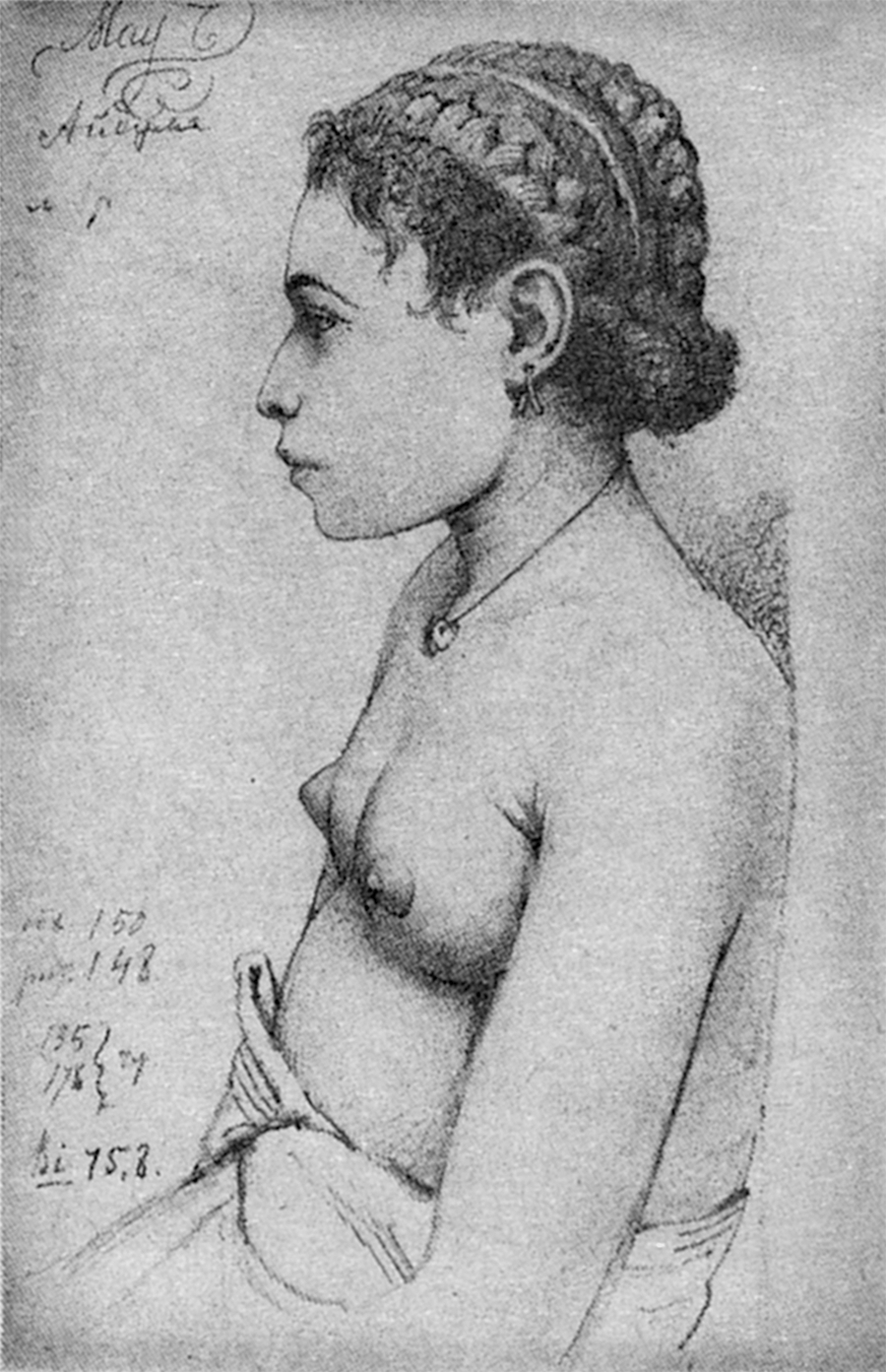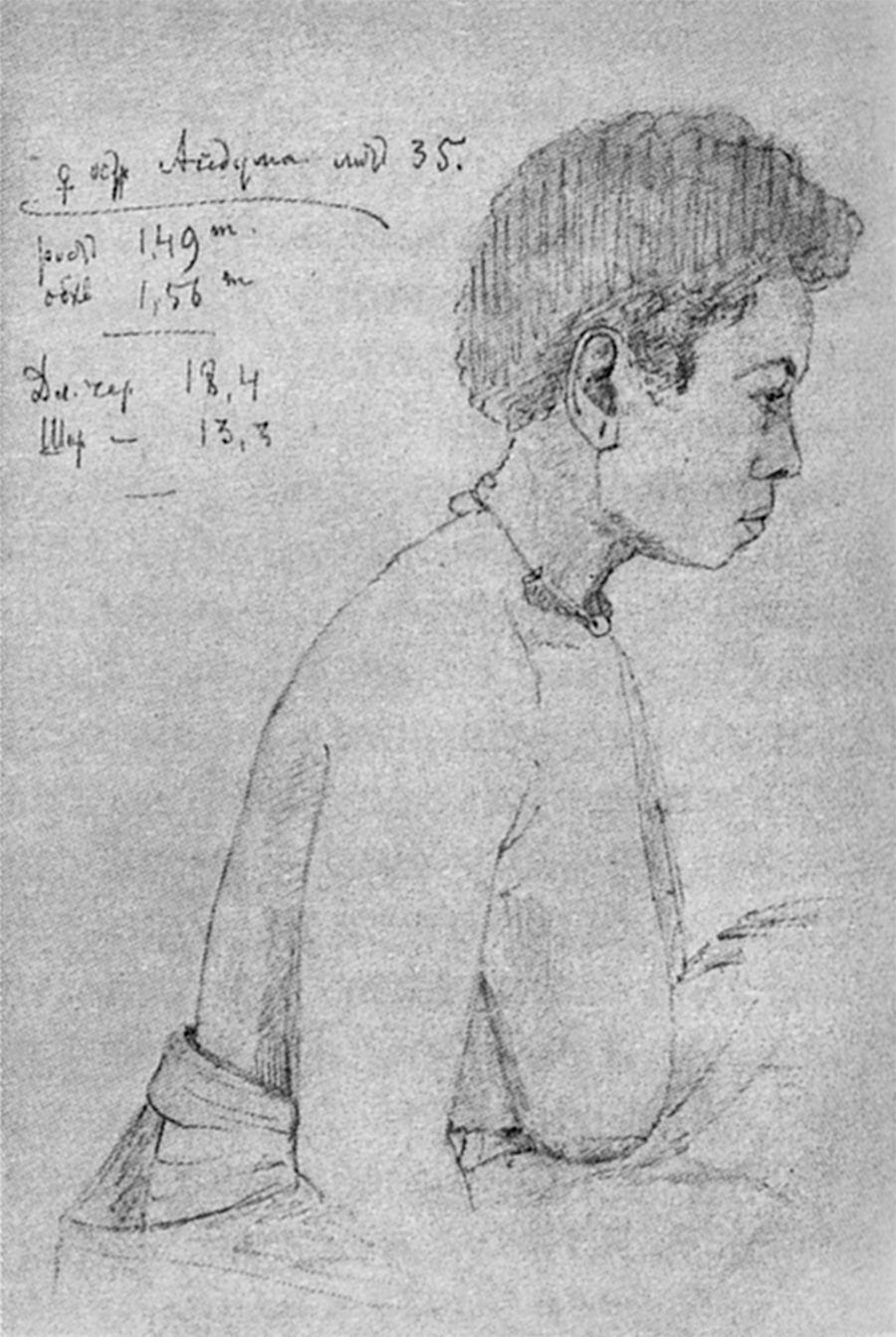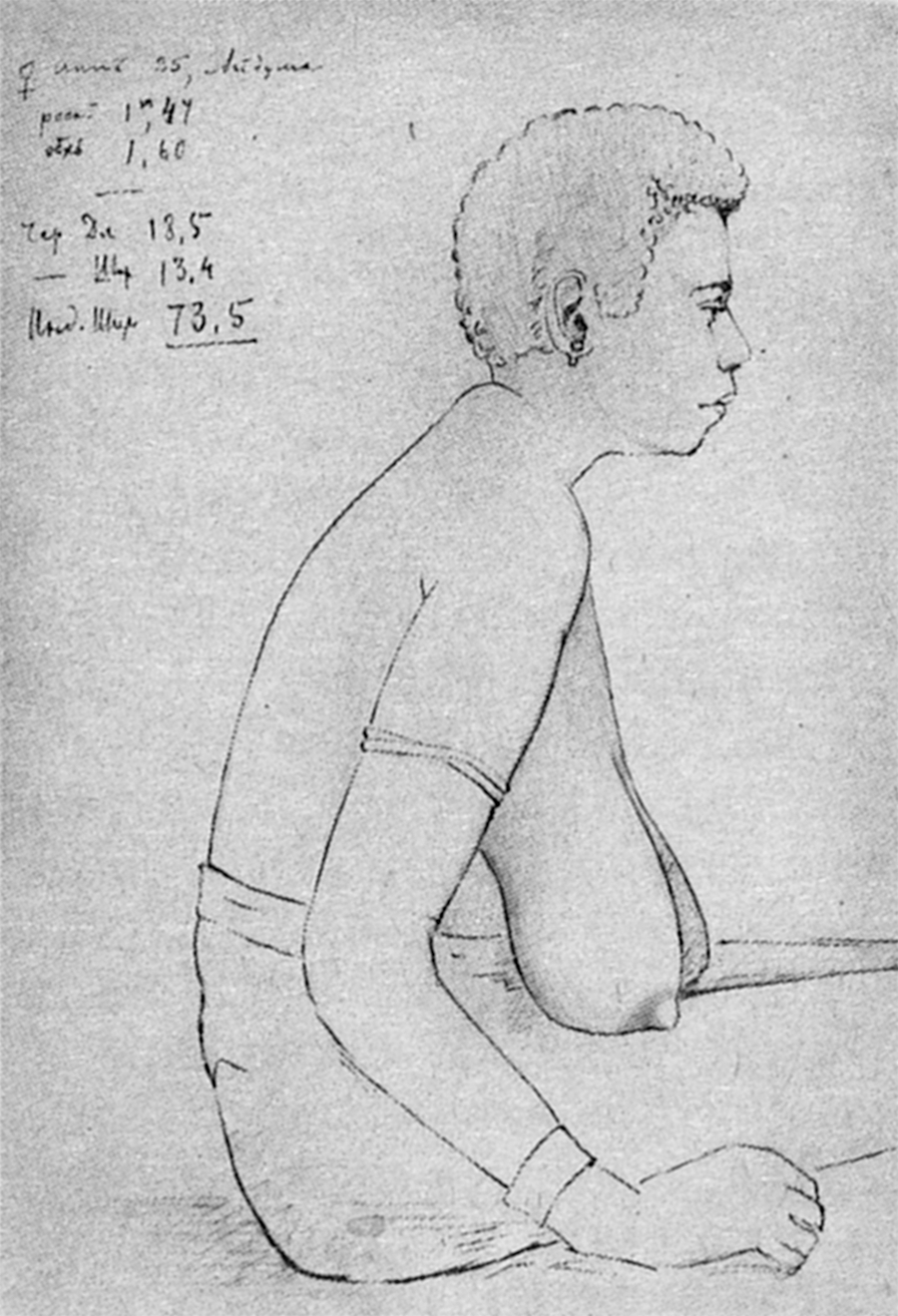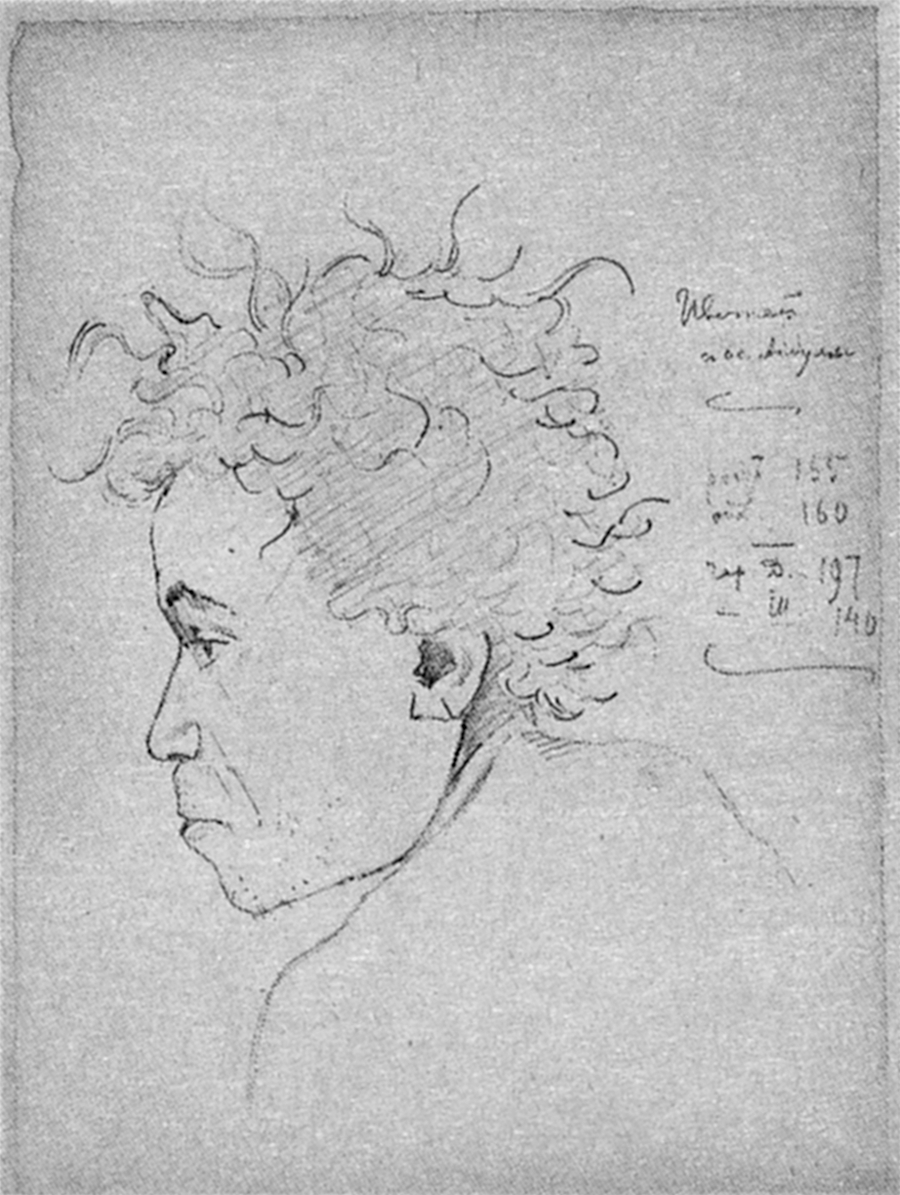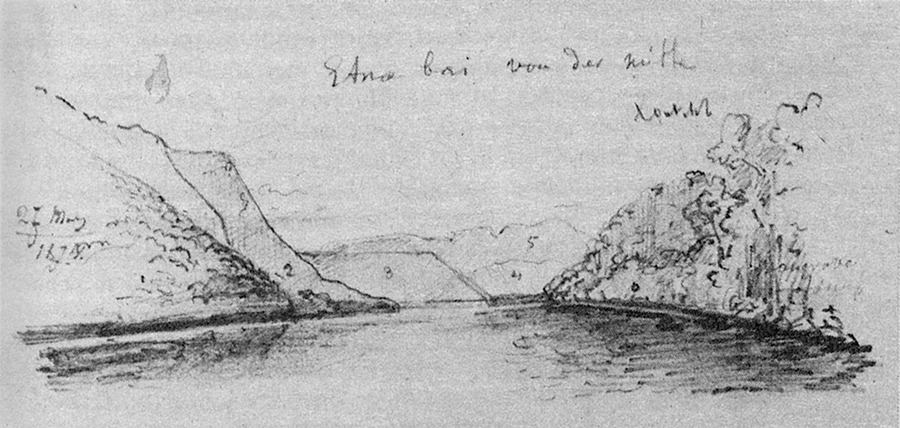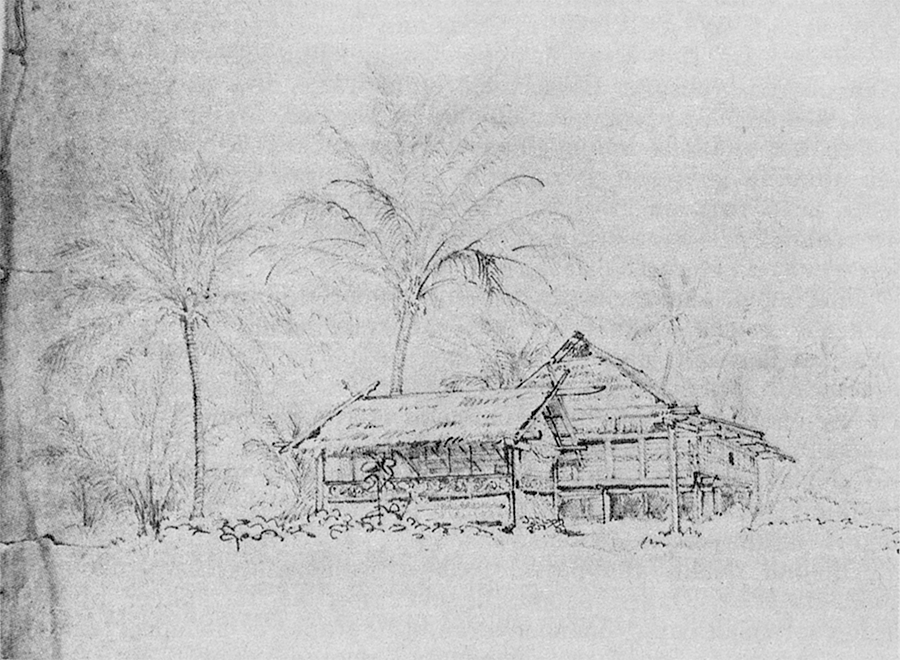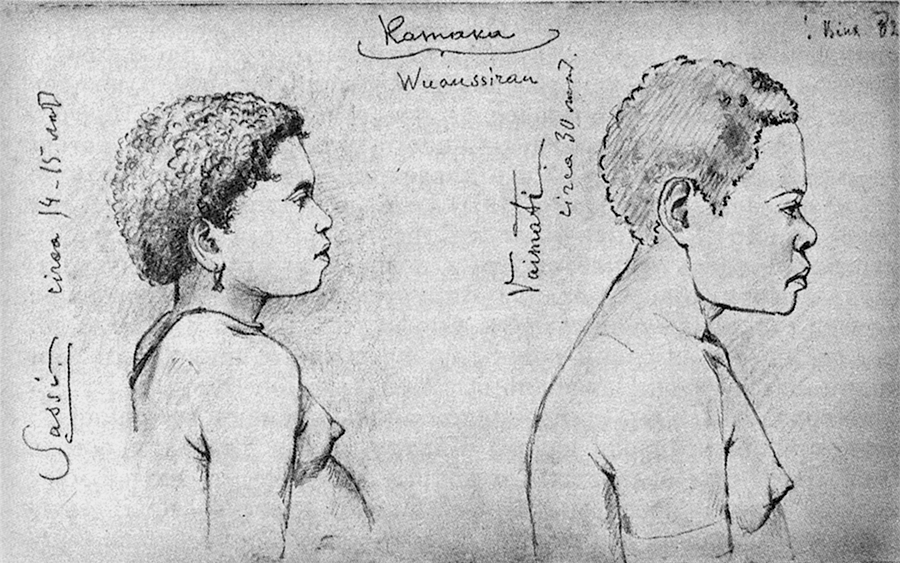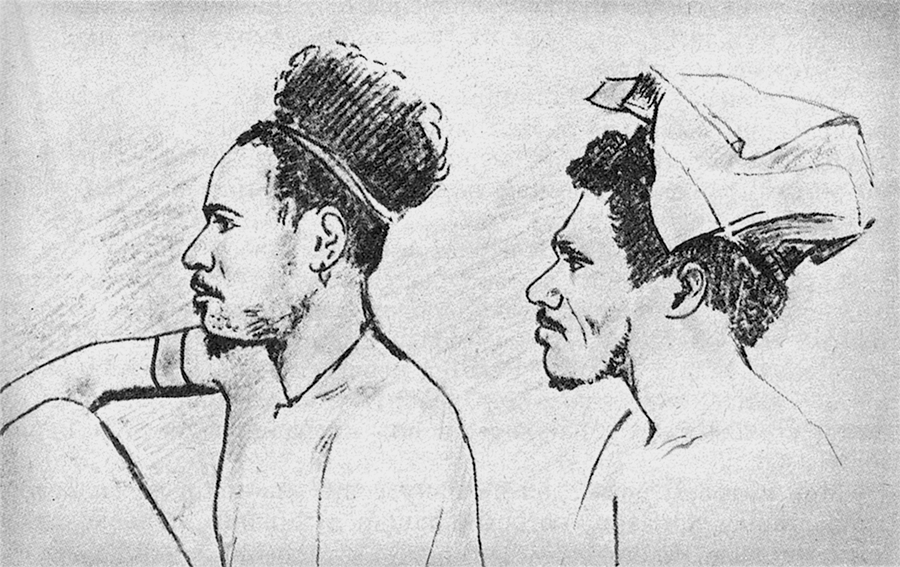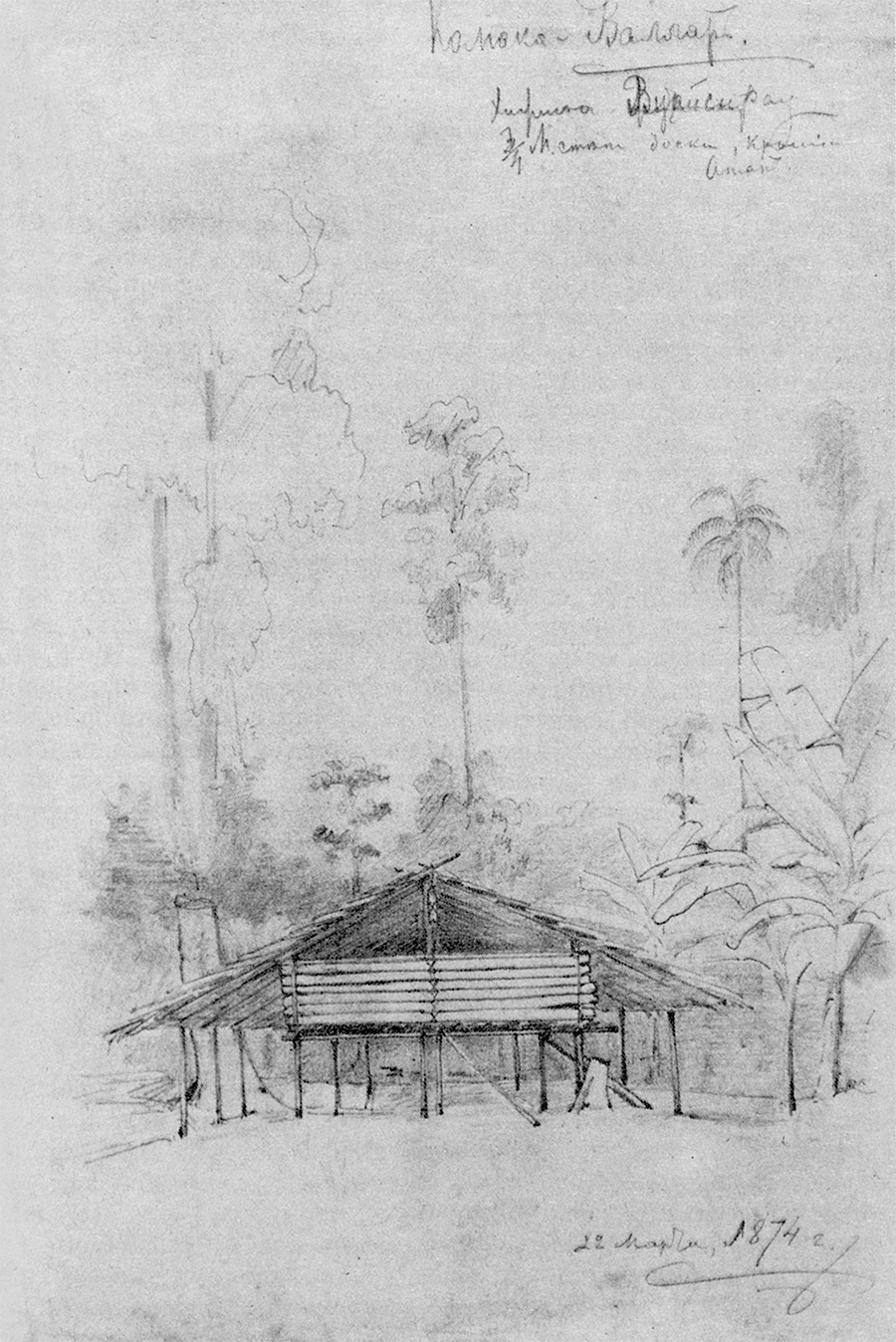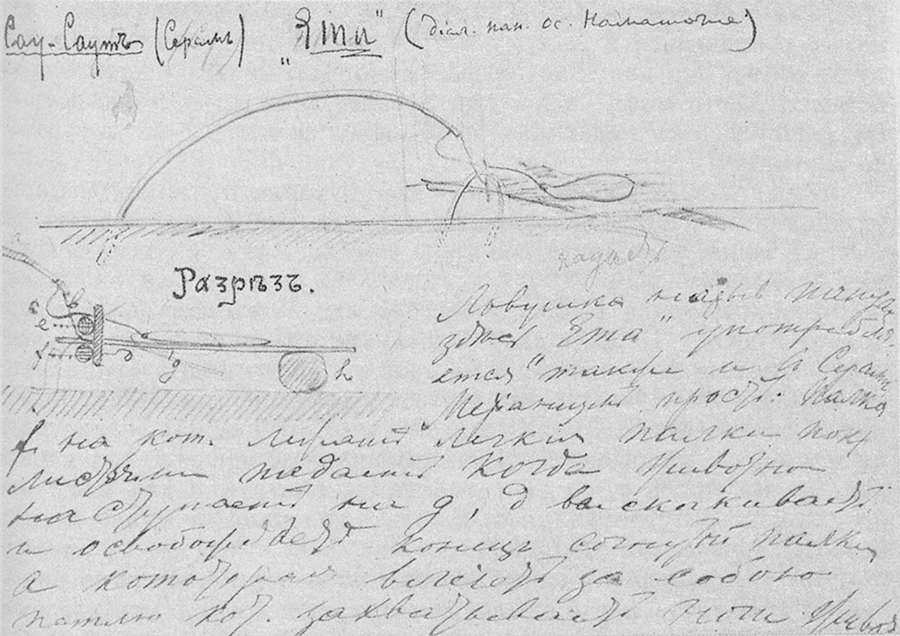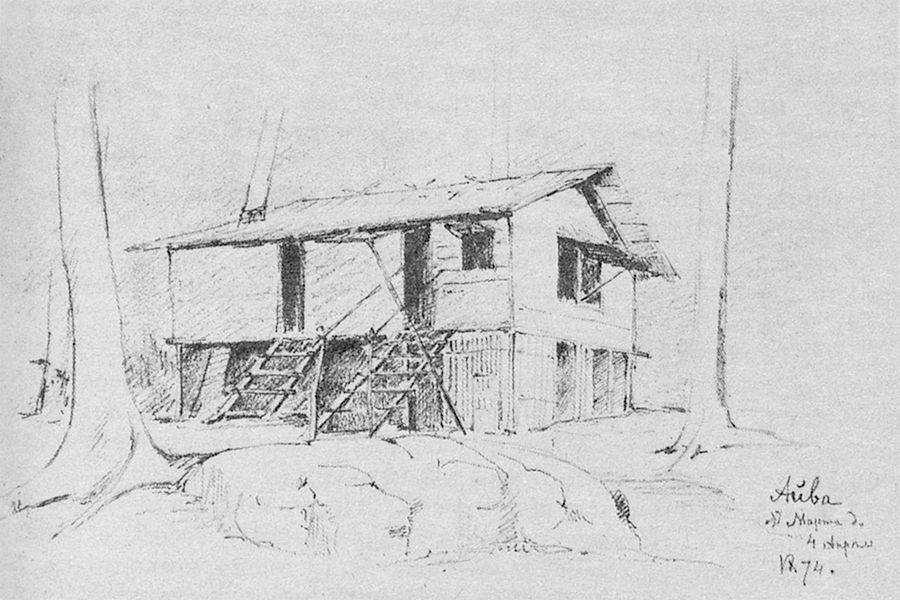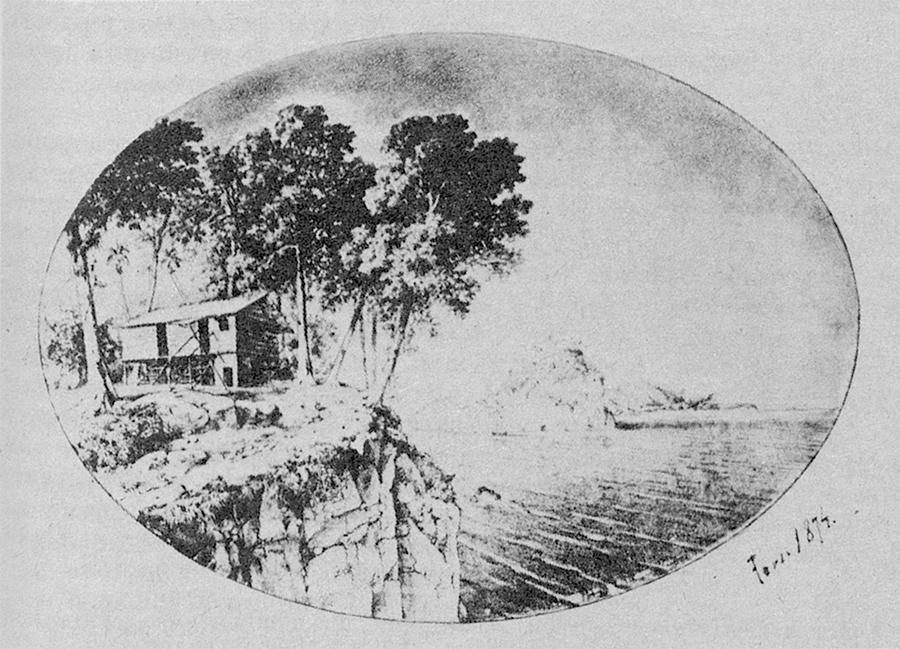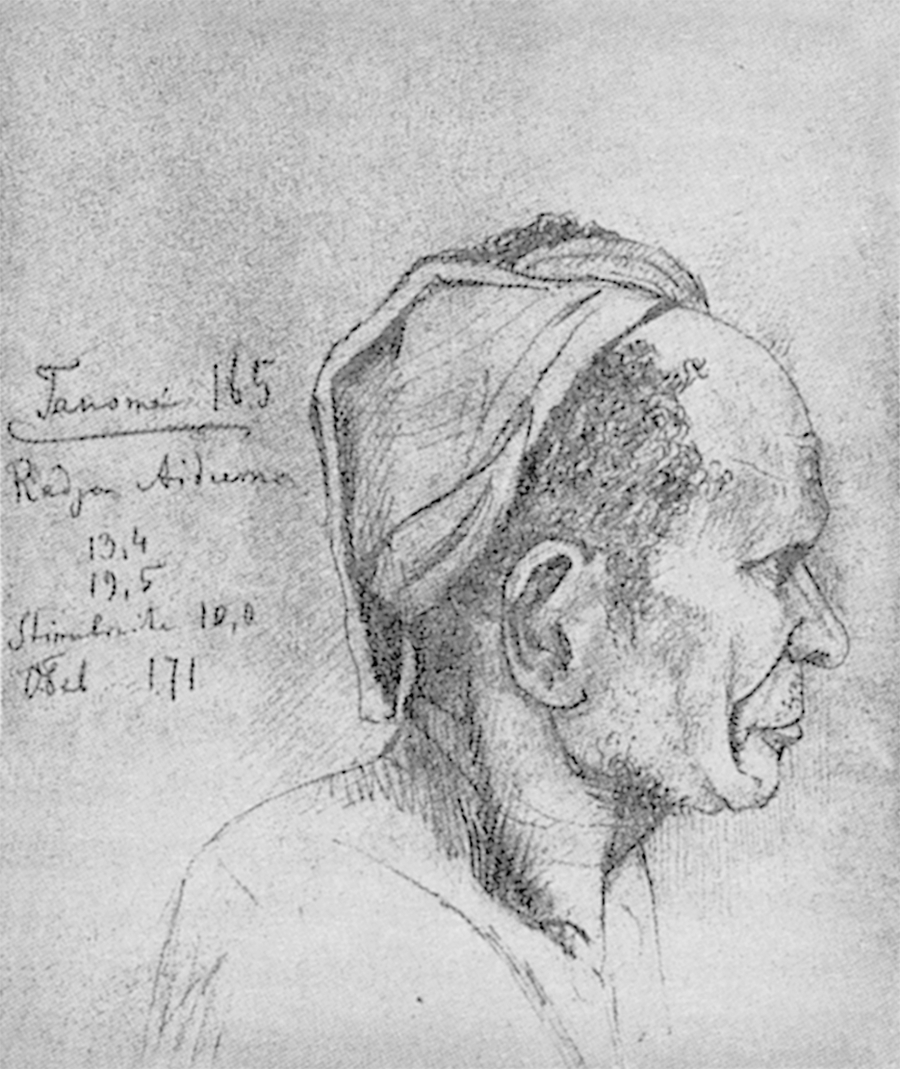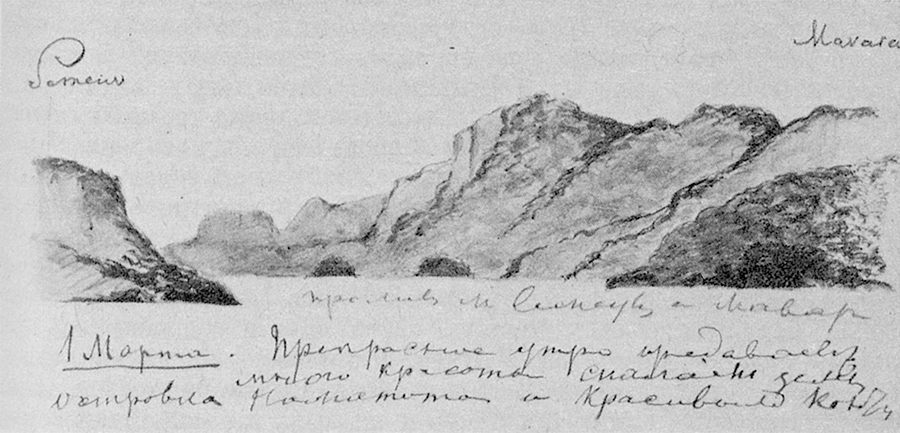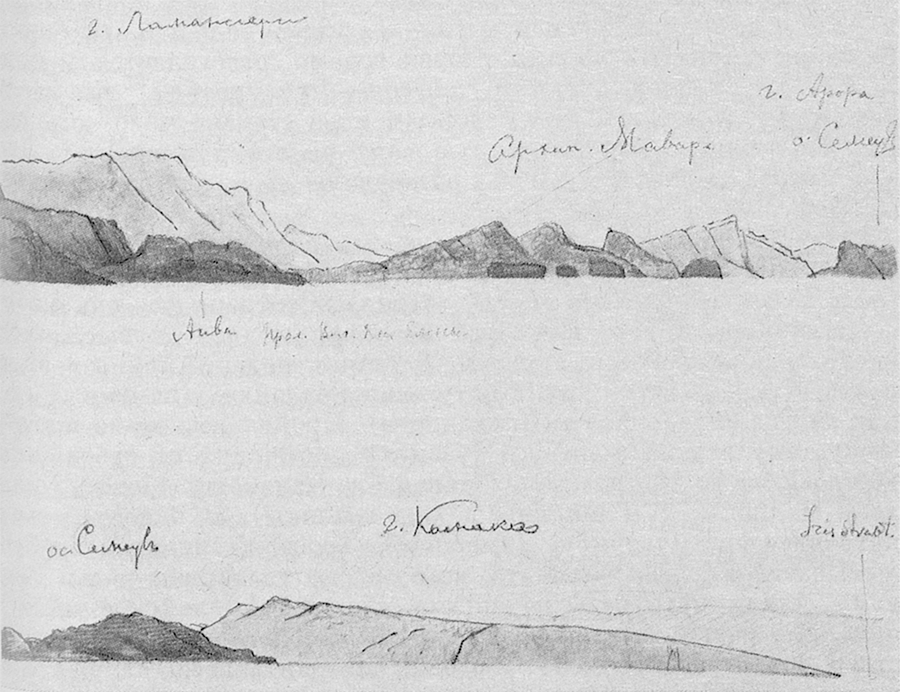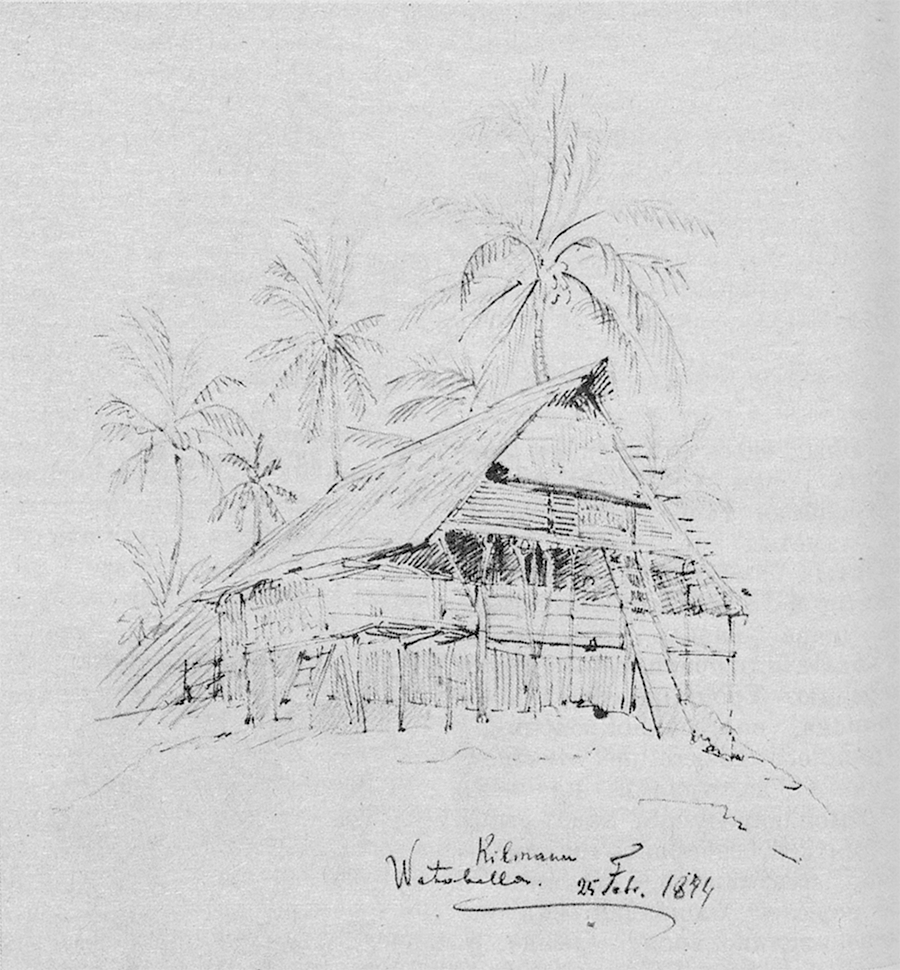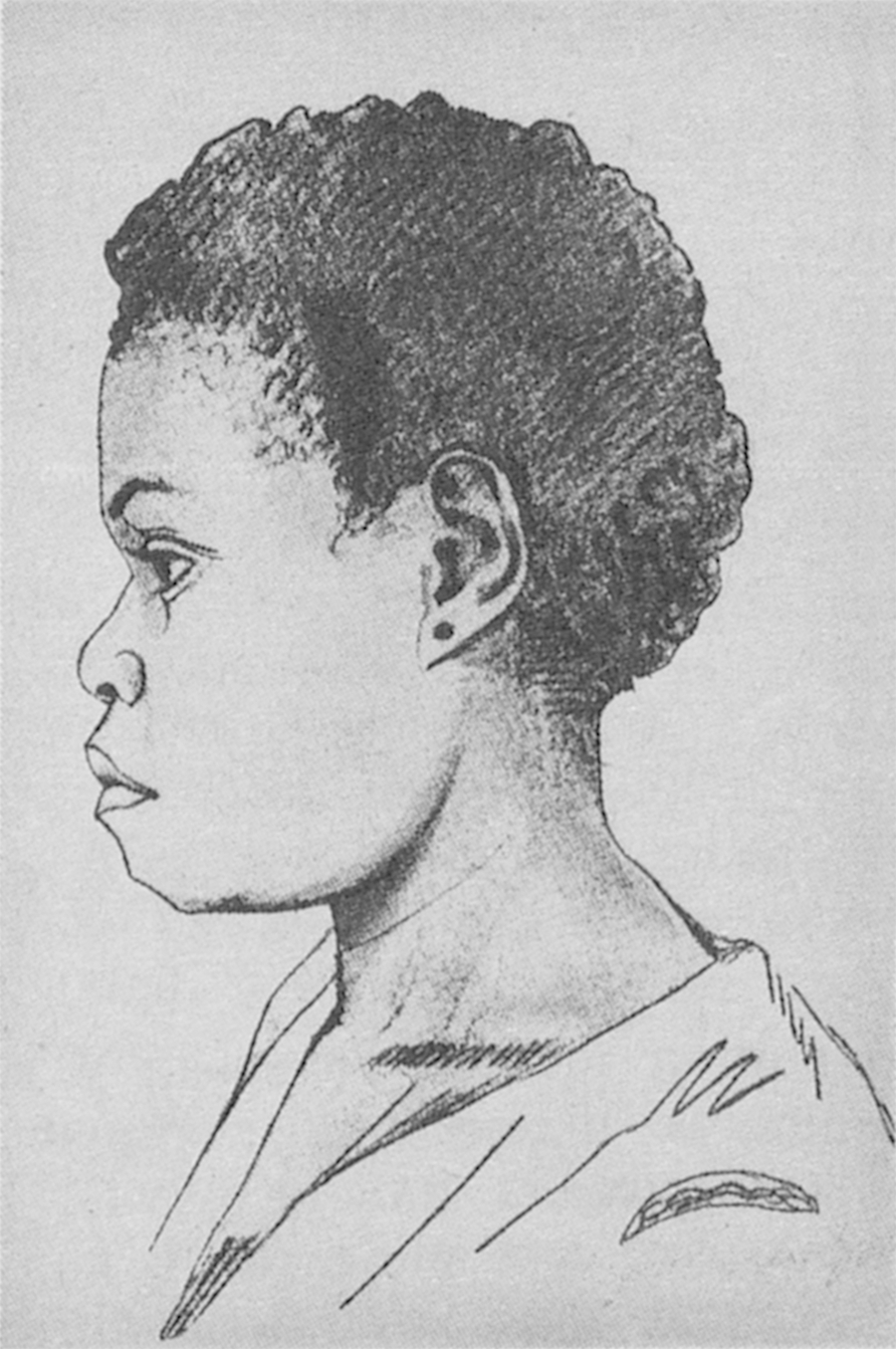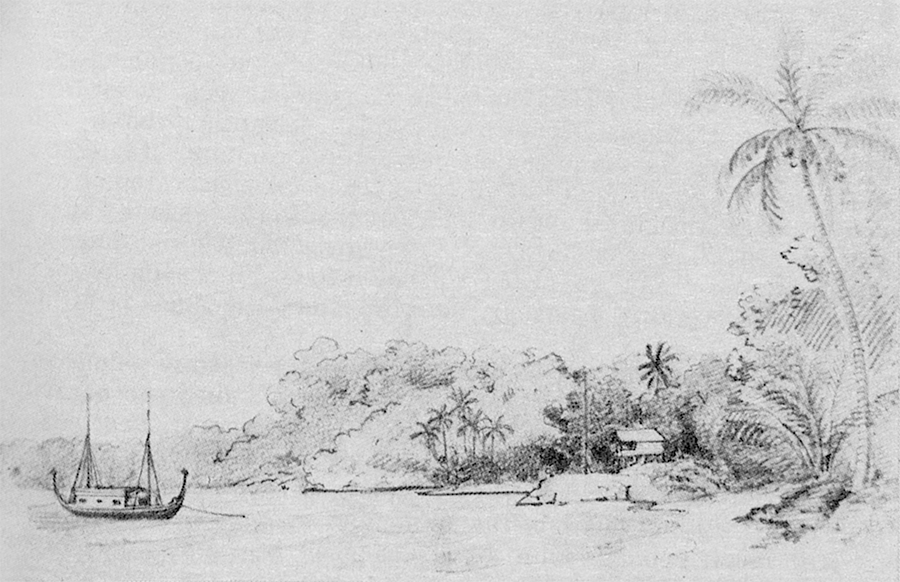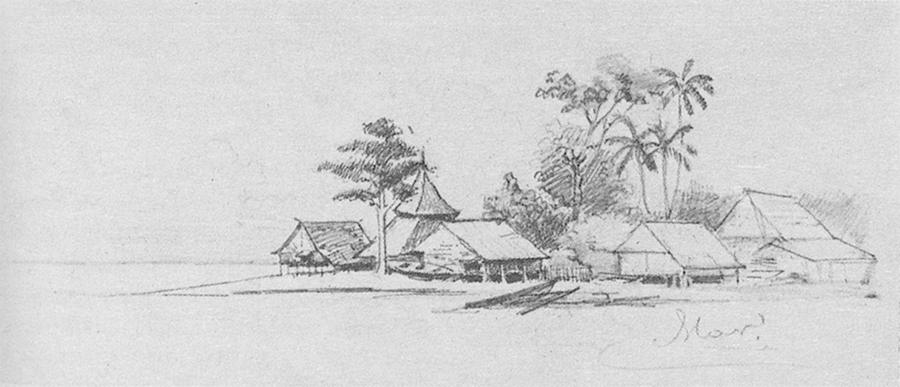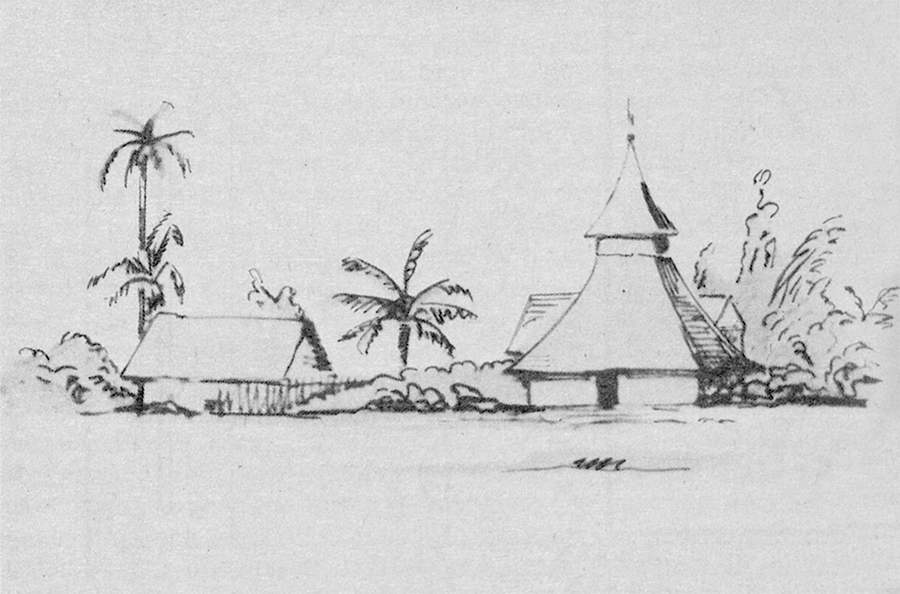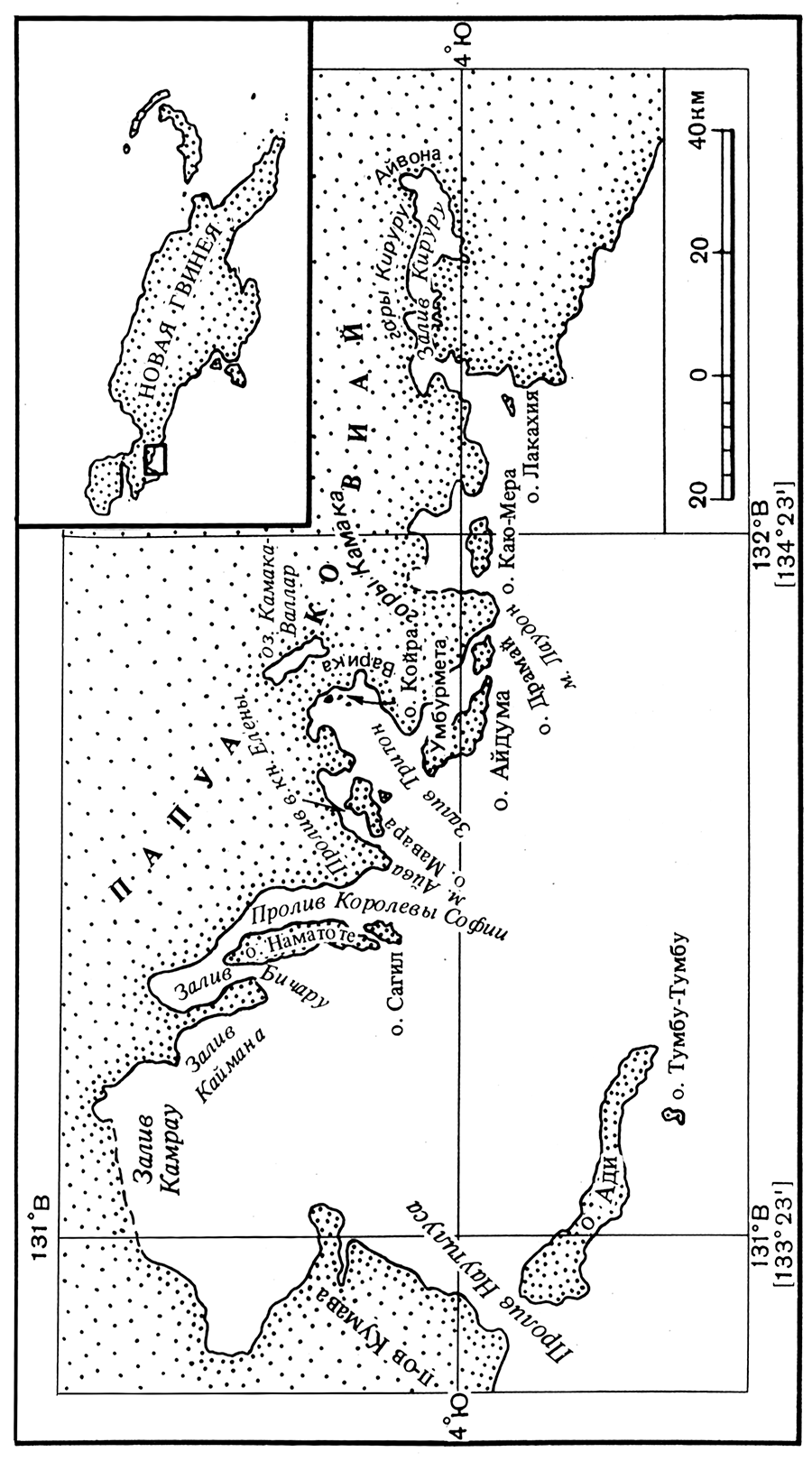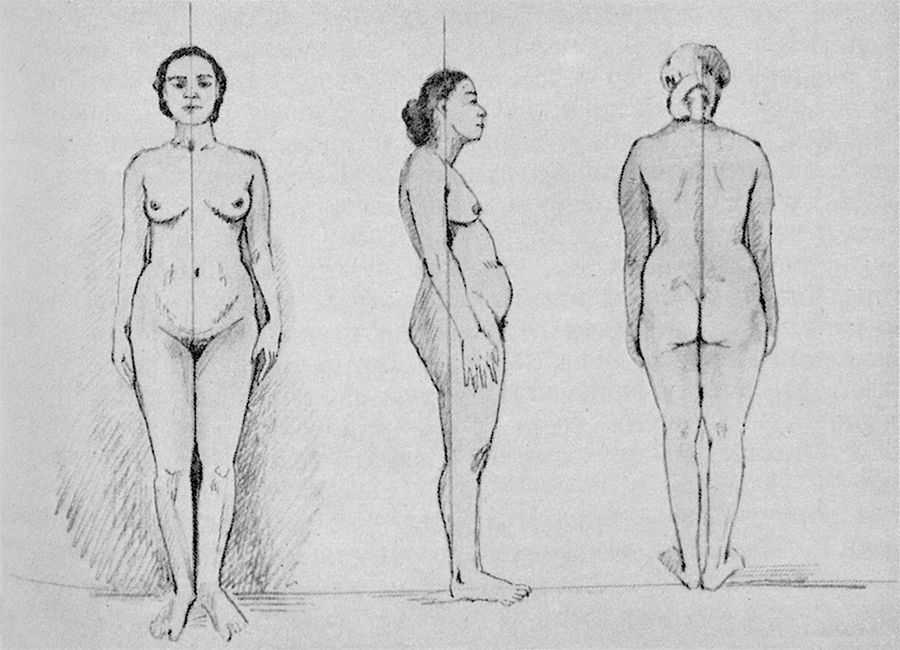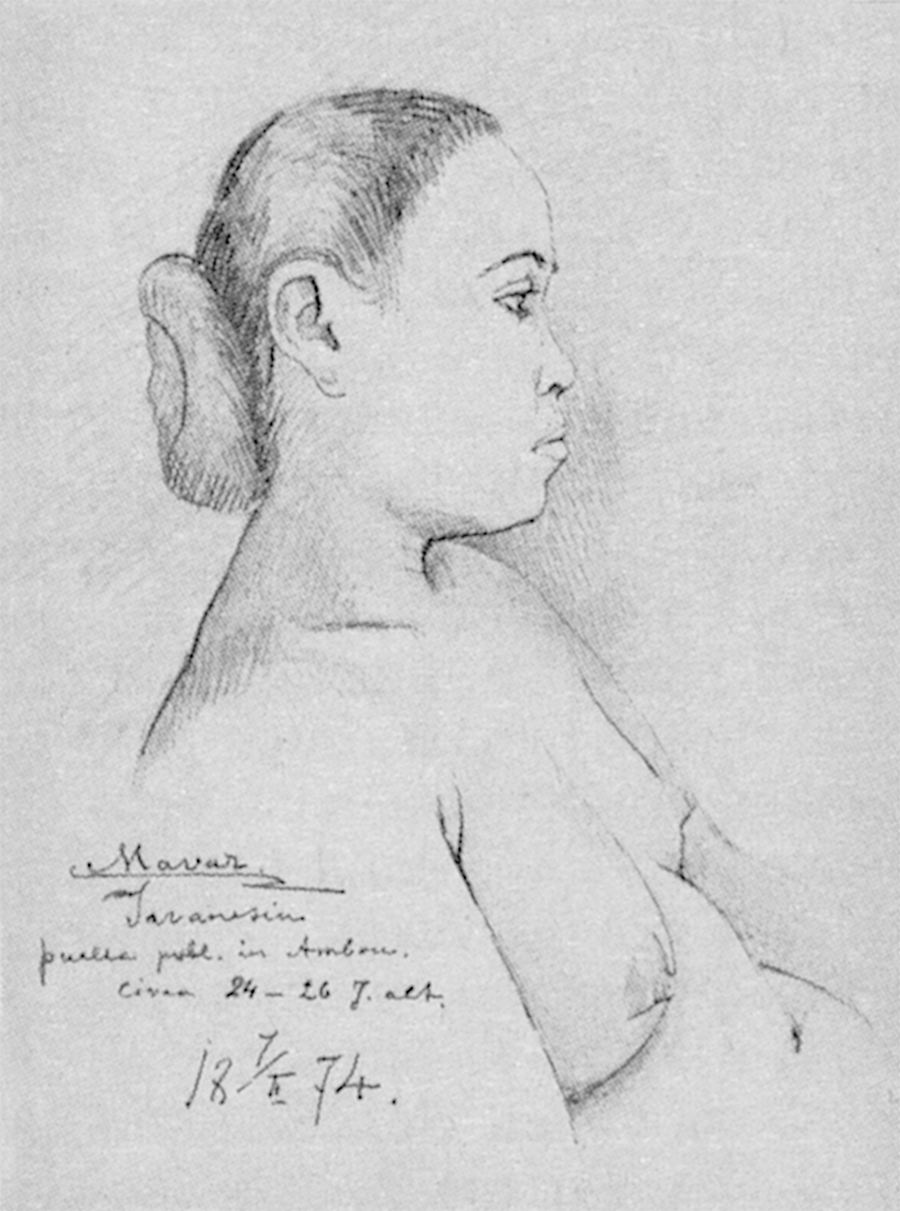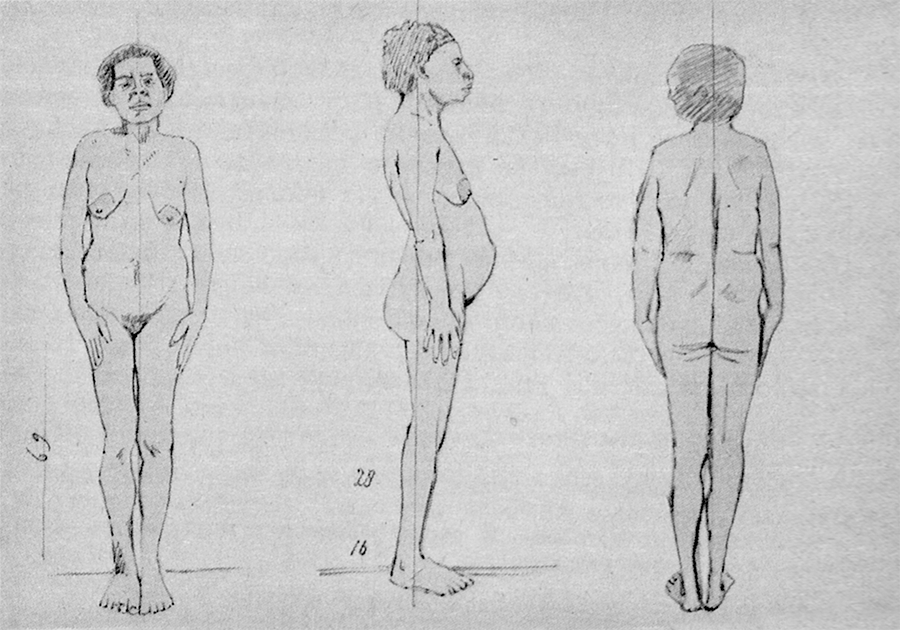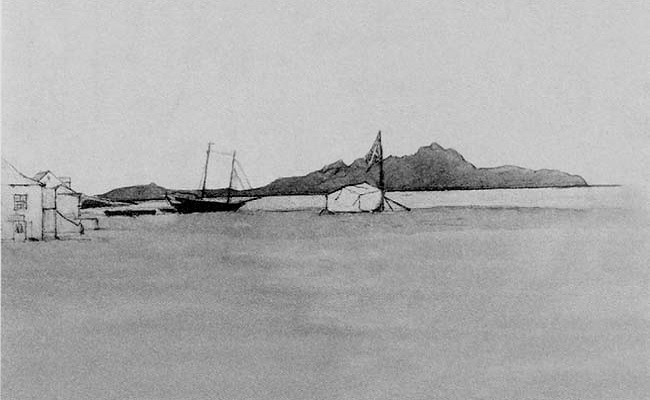
N.N. Miklouho-Maclay can rightly be recognized as a true traveler who conducted research in many places of our planet, including South America, the Dutch East Indies (now Indonesia), the Philippine Archipelago, China, the Malay Peninsula, the islands of Western Micronesia and Northwestern Melanesia, the islands of Polynesia, the southwestern and southeastern coasts of New Guinea and Australia. In total, there are more than 150 spots on the world map where the traveler stayed, his main scientific interests lying in the study of indigenous peoples, detailed descriptions of which he left for the next generations.
Wherever N.N. Miklouho-Maclay traveled, he always studied the indigenous population. One can only be amazed at the variety and abundance of information that the scientist-traveler collected, making valuable notes about the unique peoples inhabiting our planet and characteristic features of their life. Food, clothing, jewelry, tattooing, traditional weapons and tools, sailing boats, buildings, burial structures, Chiefs, free community members and dependents (whom the scientist called slaves), priests, sorcerers and shamans, concepts of the afterlife, wives and concubines, wars, headhunting, cult of ancestors – this is an incomplete list of topics that were reflected in N.N. Miklouho-Maclay’s ethnographic records and drawings.
In 1866, still a student, N.N. Miklouho-Maclay together with his teacher E. Haeckel went on the first ecological expedition in the history of science with a purpose to study the marine fauna of the continental shelf of the Canary Islands. Then Miklouho-Maclay made his first scientific discovery – he described white calcareous sponge and named it “Guancha Blanca” after the indigenous people of the Canary Islands. In addition to marine invertebrates, Miklouho-Maclay studied sharks, paying special attention to the anatomy of their brain and swim bladder. His work on the brain of cartilaginous fish has become a scientific classic — the Russian scientist was the first to prove that the sharks’ brain was far from primitive and had a very complex structure.
In 1869, the young scientist undertook an independent scientific expedition to Africa, to the Red Sea, to study the marine fauna, to test his endurance and willpower in extreme conditions, as well as to conduct research that will contribute to science and, possibly, make him famous among the scientific community. During the expedition, the traveler gathered an interesting collection of sponges, and also noticed the richness of the local “Asian” coast with calcareous sponges, while Demosponges were more common on the “African” coast. Based on his own observations, Miklouho-Maclay proposed a hypothesis that was proven to be correct later: “The difference in geographical distribution obviously depends on many reasons; one of them is the currents caused by the prevailing winds. These winds cause currents in one or the other longitudinal direction, which prevents both coasts from exchanging fauna.” Moreover, during the trip along the shores of the Red Sea, the traits that determined the future life of the Russian scientist became obvious — a penchant for difficult and dangerous adventures, a deep interest in the way of life and culture of the peoples of the world. Even then, the traveler already made interesting observations on the life, culture and anthropological composition of the population of Cairo, Suez, Jeddah and other cities near the Red Sea coast.
After graduating from the University, N.N. Miklouho-Maclay passionately read scientific literature, maintained discussions and correspondence with leading Russian and world scientists, who led the young scientist to the idea that it was advisable to start his long-term research from New Guinea, a huge island in Oceania, which at that time actually remained unexplored by Europeans.
On 8 October 1870, at the age of 24, N.N. Miklouho-Maclay set off on his first trip to the New Guinea Island on the corvette “Vityaz”. In November-December 1870, following the preliminary agreement, the traveler disembarked the corvette in Copenhagen (Denmark) to make a trip to European cities and return on board in an English port, from where “Vityaz” again went out into the Ocean. The scientist stayed in Copenhagen for four days, and went to Germany, Holland and Belgium from there. During this trip, N.N. Miklouho-Maclay visited museums and libraries, met with officials, scientists and entrepreneurs to get letters of recommendation or additional advice on scientific issues that interested him, and purchased additional expedition equipment.
On the way to the cherished northeastern coast of New Guinea, “Vityaz” made long stops in South America, in particular in Brazil and Chile. While in Rio de Janeiro, N.N. Miklouho-Maclay completed an article on the sponges of the Red Sea, and also prepared a report “On the Ocean depths temperature studies”, after which he sent his works to the St. Petersburg Academy of Sciences. Moreover, N.N. Miklouho-Maclay observed the population of the capital of Brazil. “The streets and markets in Rio are a vast field for observations for a traveler interested in anthropology and ethnology,” the traveler wrote in his diary. N.N. Miklouho-Maclay visited many major cities of Chile, including Santiago and Punta Arenas. The latter remains one of the southernmost cities in the world to this day. Thanks to the traveler’s diaries, interesting observations about the appearance and some customs of the local Patagonian inhabitants, their clothes and jewelry have come down to us. There are also several portraits of Patagonians made by Miklouho-Maclay in Chile.
On September 20, 1871, the Russian scientist-traveler went ashore on the northeastern coast of New Guinea for the first time, no European had ever set foot there before. N.N. Miklouho-Maclay lived here for two and a half years and visited those places three times (1871-1872, 1876-1877 and 1883). The Russian traveler established friendly contacts and good relations with the indigenous people, the Papuans, as well as mastered some of their languages. With his patience, kindness, tenderness and courage, the Russian scientist and traveler won the trust, love and devotion of the natives. In fact, he “discovered” the Papuans (indigenous people) of the northeastern coast of New Guinea to the outside world. It was the place where Miklouho-Maclay lived most of his time in New Guinea. He named it the Maclay Coast “by the right of the first European who settled there, explored the coast and got scientific results”.
In December 1872, after a long 15-month expedition, N.N. Miklouho-Maclay left the Maclay Coast onboard the clipper “Izumrud”. One of “Izumrud”’s stops was Manila — the main city of the Philippine Archipelago. There Nikolay Nikolaevich studied the anthropological features of the Aeta Negritos – the first people of the Philippines: “Not only their faces, but also the way they treat each other, women and children, even their facial expressions, the way they speak and sit, their dances and songs reminded me vividly of the Papuans of New Guinea,” – Miklouho-Maclay reported. The traveler also made several portraits, which, unfortunately, have not survived to our days.
After studying the ancient population of the Philippine Archipelago, N.N. Miklouho-Maclay arrived in Hong Kong on the clipper “Izumrud”. There the traveler was surprised to find out that after his first expedition to the Maclay Coast, he became widely known, even world-famous. “Everyone tries to get acquainted with me, which sometimes tires me out, but also opens all doors, and kind hospitality everywhere saves a lot of money,” – the traveler wrote in a letter to his mother Ekaterina Semyonovna. Then N.N. Miklouho-Maclay went to another large and interesting Chinese city, Canton (modern Guangzhou), where he “had an audience with the Viceroy of Canton”. The high reception of Miklouho-Maclay in Canton was especially valuable, since very few Europeans were honored with an audience with the Viceroy.
During the studies of Southeast Asia and Oceania, N.N. Miklouho-Maclay was also attracted to the Dutch East Indies (now Indonesia), where he first arrived in 1873 on the clipper “Izumrud”. The learned traveler always valued his time and used it to good advantage: during the stop of the Russian ship at the island of Ternate (now the administrative center of Northern Maluku province in Indonesia), he got interesting information from local sea traders about the inhabitants of Indonesia and various areas of the southwestern coast of New Guinea – the coast of Papua Koviai. This coast later became the destination point of Miklouho-Maclay’s second expedition to New Guinea. At that time, many scientists and sea traders were afraid to go ashore in Papua Koviai because of rumors about the bloodthirstiness and cunning of the locals. This suited the Russian traveler in the best possible way, because he wanted to study the tribes that were less known to Europeans and less susceptible to external influences. “The coast of Papua Koviai” is an outdated name for the southwestern coast of the Indonesian autonomous province of Irian Jaya (western New Guinea). Now this region is called Kaimana. What are the scientific results of N.N. Miklouho-Maclay’s expedition to Papua Koviai? Firstly, Nikolay Nikolaevich arrived at the conclusion that the inhabitants of Papua Koviai, like the inhabitants of the Maclay Coast, belong to the Papuan race, although there were people of mixed origin among the Koviai people – descendants of Malay men and local women. Secondly, the scientists found that marriages between local peoples gave healthy offspring, and did not lead to inferiority. This fact became another argument in favor of the equality of all races on the planet. After the expedition to Papua Koviai N.N. Miklouho-Maclay visited Indonesia, which he loved so much, more than once. It is noteworthy that, being on the territory of modern Indonesia, N.N. Miklouho-Maclay continued processing the materials collected during his expeditions, and also published a number of articles that gained world fame.
In the Autumn of 1874, N.N. Miklouho-Maclay arrived in the harbor of Singapore — a port city on a small island of the same name, located near the southern coast of the Malay Peninsula, where he gladly accepted the invitation of Sultan Abu Bakar to move to his palace in the city of Johor Bahru. There Miklouho-Maclay prepared for his two-time trip to the jungle of Malacca. After the explorer’s arrival in Malacca, the English governor welcomed him cordially, but did it not without intent. For him, Miklouho-Maclay was not just a famous traveler and a humanist-scientist, but a person who was able to go deep into the jungles of Malacca and get information useful for further English expansion. Subsequently, the Russian scientist found out about the plans and kept the information about the Malay population from him. N.N. Miklouho-Maclay was getting more involved in the study of culture, customs and traditions of the Malays, as well as the relationship of the local states’ rulers. With great care, the scientist compiled dictionaries of the main words of the Malay dialects, noting the similarities and differences from other Malay equivalents. Moreover, during his stay in Malacca, Miklouho-Maclay studied the Malay language thoroughly. Travel diaries, drawings and dictionaries of local dialects carefully compiled by N.N. Miklouho-Maclay are a great contribution to the anthropological and ethnographic studies of the Malays. During the second expedition on the peninsula, Nikolay Nikolaevich discovered the Senoi tribes Semelai and Temok, as well as a small Semang tribe Batak De, who represented themselves as nomadic hunters and gatherers.
In 1876, on the way to the Maclay Coast, N.N. Miklouho-Maclay conducted extensive anthropological and ethnographic research on the islands of Western Micronesia and Northwestern Melanesia. The scientist reported the most detailed information about the indigenous population of the islands of Palau and Yap. Nikolay Nikolaevich made valuable observations about several interesting customs of local residents (for example, the custom of artificial compression of a newborn baby’s nose on Yap islands) and about certain aspects of their religious beliefs and mythology. His descriptions of the anthropological features of the islanders are of considerable importance.
N.N. Miklouho-Maclay’s life was inextricably linked with Australia, where the Russian scientist first arrived in July 1878. On the fifth continent Nikolay Nikolaevich met his future wife, Margaret Emma Clark (Robertson), a daughter of the head of the government of the English colony of New South Wales. Later they had two sons, Alexander and Vladimir (Nils and Allen). In total, N.N. Miklouho-Maclay lived in Australia for about seven years. As a result of the great Russian scientist’s scientific research, he published a lot of articles in scientific journals on zoology, geography and geology of Australia, as well as anthropology and ethnography of the indigenous population of the mainland. In the last period of his life in Australia (in the mid-1880s), the scientist began to gather and publish materials about the fauna of New Guinea, because even during his first expedition to the Maclay Coast, the traveler initiated the study of the fauna of New Guinea. In his diaries, one can find many interesting observations of marsupials (tree-kangaroos, bandicoots, etc.), birds, crocodiles, lizards, fish, calcareous sponges. Whenever possible, he collected material for his comparative anatomical studies. Miklouho-Maclay dreamt about biological stations built across the entire world. According to his concept, the stations would become temporary residences for scientists, where they could make experiments, collect data, conduct research, and then move to the next stations. Miklouho-Maclay presented the idea in 1869 at The II Congress of Russian Naturalists and Doctors in Moscow. His colleagues supported the idea and the Congress decided to establish the first station at the coast of Crimea in Sevastopol. In 1871, Sevastopol biological station was opened, it was the first station in Russia and Europe, and the third in the world. Nowadays it has transformed into an important scientific institution, A. O. Kovalevsky Institute of Biology of the Southern Seas of the Russian Academy of Sciences. N.N. Miklouho-Maclay proposed to build the same station in Australia, and the credit for its opening in the Watsons Bay, near Sydney in 1881 undoubtedly belongs to him. The traveler considered it “an example of a truly international scientific institution that will be of great importance for biological sciences and their progress”. However, in 1885, the Australian Army claimed the land, where the station was located, for defense purposes. And, in 1886, it was closed.
In 1879-1880, N.N. Miklouho-Maclay made his second expedition to Oceania. The traveler visited New Caledonia, the Admiralty Islands (or the Manus Islands), New Hebrides (now Vanuatu), etc. During the trip, Miklouho-Maclay would settle in coastal villages, where he studied the local people’s anthropological features, culture and way of life, recorded the changes that occurred in the original way of living under the influence of contacts with European sailors, traders and planters, and missionary activity. His research on the Hermit Islands (a group of islands within the Western Islands), where he spent only three days, is particularly interesting. In such a short period of time he collected a lot of information, both on the traditional culture and on the physical appearance of the indigenous people of this little-known group of islands.
In 1880, N.N. Miklouho-Maclay made a trip over the southeastern coast of New Guinea. The scientist was primarily interested in the anthropological features of the local people and, as well as visual observations, made quite a lot of measurements of the islanders’ heads. The scientist-traveler refuted the reports of some travelers about the “yellow Malay race” living here. Miklouho-Maclay explained the lighter skin color of the inhabitants of several villages in the Port Moresby area, who spoke not Papuan, but Austronesian (Malay-Polynesian) languages,with a slight “Polynesian or Malay admixture”. According to modern scientific theories this phenomenon reflects the history of the settlement of Oceania, most likely, the migration of groups of Proto-Polynesians through this region. Moreover, the traveler suggested that studying the language and traditions, as well as comparing the patterns and style of tattoos of the residents of the southern coast of New Guinea would “probably give an opportunity to determine from which part of Polynesia the ancestors of the Polynesian element of this mixture originated”.
The same year, despite the painful health condition and the desire to return to Sydney as soon as possible, N.N. Miklouho-Maclay could not resist the temptation to visit the small islands in the Torres Strait and near Cape York, the northernmost extremity of the Australian mainland. The scientist spent two days on the islands of the Torres Strait, where during this short time he collected extensive information about the number of local residents, their ethno-racial origin, occupations and cultural features, the unique features of the fauna, acquired several skulls, etc. According to the scientist’s diary records, the inhabitants of the Torres Islands represented, as it were, an intermediate link between the population of the Australian Cape York and the adjacent part of the island of New Guinea.
During his expeditions to Southeast Asia and Oceania, the Russian scientist thoroughly described the economy, life, material culture, customs and traditions of the locals, paying special attention to their original art. N.N. Miklouho-Maclay’s diary records still remain a valuable source on the ethnography of New Guinea. The scientist’s drawings made during the expeditions are also a valuable ethnographic and anthropological source, because they were made “with the accuracy of proportions, precise details, and reflect both the anthropological type and the individual features.” N.N. Miklouho-Maclay is an author of more than 700 drawings.
Nikolay Miklouho-Maclay is the author of about 160 scientific works in ethnology, anthropology, meteorology and oceanology, etc., published in Russian, English, German and other European languages. The results of his studies formed the basis of a number of publications around the world about the life of Miklouho-Maclay, including the Russian six-volume (in seven books) Collected Works, the most complete collection of the scientist’s works to date, which was published in 2021 within the program of the Russian Culture Foundation in cooperation with the Miklouho-Maclay Foundation for the Preservation of Ethnocultural Heritage and approved for publication by the N.N. Miklouho-Maclay Institute of Ethnology and Anthropology of the Russian Academy of Sciences.
It is also impossible not to mention the traveler’s activity for the protection of indigenous people on the island of New Guinea and other islands from enslavement by European colonizers. Using the example of the Papuans (indigenous people) of New Guinea, the Russian traveler and humanist decisively debunked some European scientists’ theories about the inferiority of the dark-skinned races. Even today the ideological heritage of N.N. Miklouho-Maclay makes it possible to counteract unreasonable fabrications about the superior or inferior races. The scientist promoted respect for the traditions of all peoples through the knowledge of their culture, which, in his opinion, would form the personality of a citizen who is respectful and unbiased towards all nations of the world.
The work done by the Miklouho-Maclay Foundation on reviving Miklouho-Maclay’s travel route and mapping more than 150 spots on the world map is another step towards restoring the continuity of the South Pacific explorations by Russian scientists and preserving priceless monuments of Russia’s historical and cultural heritage.
